See America on These 10 Unforgettable National Park Road Trips
Combining America’s wide open highways, charming towns, quirky roadside attractions, spectacular landscapes and iconic wildlife, U.S. national park road trips are arguably the nation’s quintessential vacation.
In this blog post, you’ll find the absolute best road trips to national parks in America, from south Florida to the Pacific Northwest, and so much in between!
10 Best National Park Road Trips in the USA
For many decades, national park road trips have been an annual tradition for countless American families. Visitors from abroad, too, relish the opportunity to explore the greatest and most famous landscapes of the USA.
A road trip allows you to do this at your own pace—with your own vehicle, whether it’s a car or RV—create a specific itinerary, and stop and go as you please.
It brings with it the joy of hiking to a mountain top, of hanging out around a campfire, of gazing up at a star-studded sky at night, of watching wildlife in their natural habitat,… It offers the chance to live in the moment, be present and immersed in the landscape.
So, if you’re looking for some ideas or inspiration, you’ll really enjoy the epic road trips to national parks below.
From the Appalachians in the East to the Rocky, Cascade and Sierra Nevada Mountains of the West, from the Dakota badlands to Florida’s coral reefs, there are many U.S. regions that are ideal for unforgettable self-drive holidays.
National Parks Road Trip Map
This map shows the general location and route of each of the U.S. national parks road trips below.
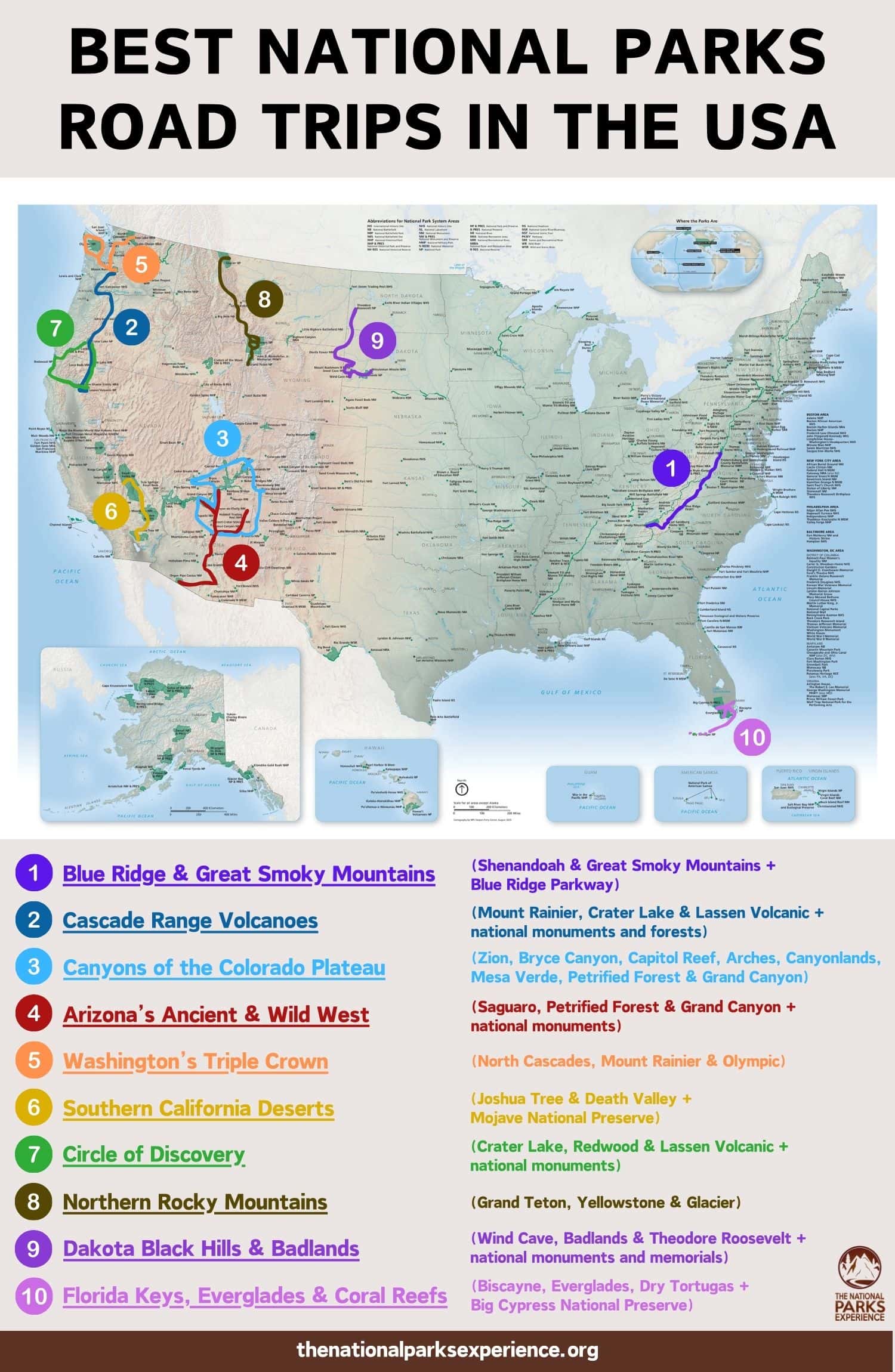
This post about the best U.S. national park road trips contains affiliate links. You can read more about our Terms of Use / Disclosure here.
1. Blue Ridge & Great Smoky Mountains
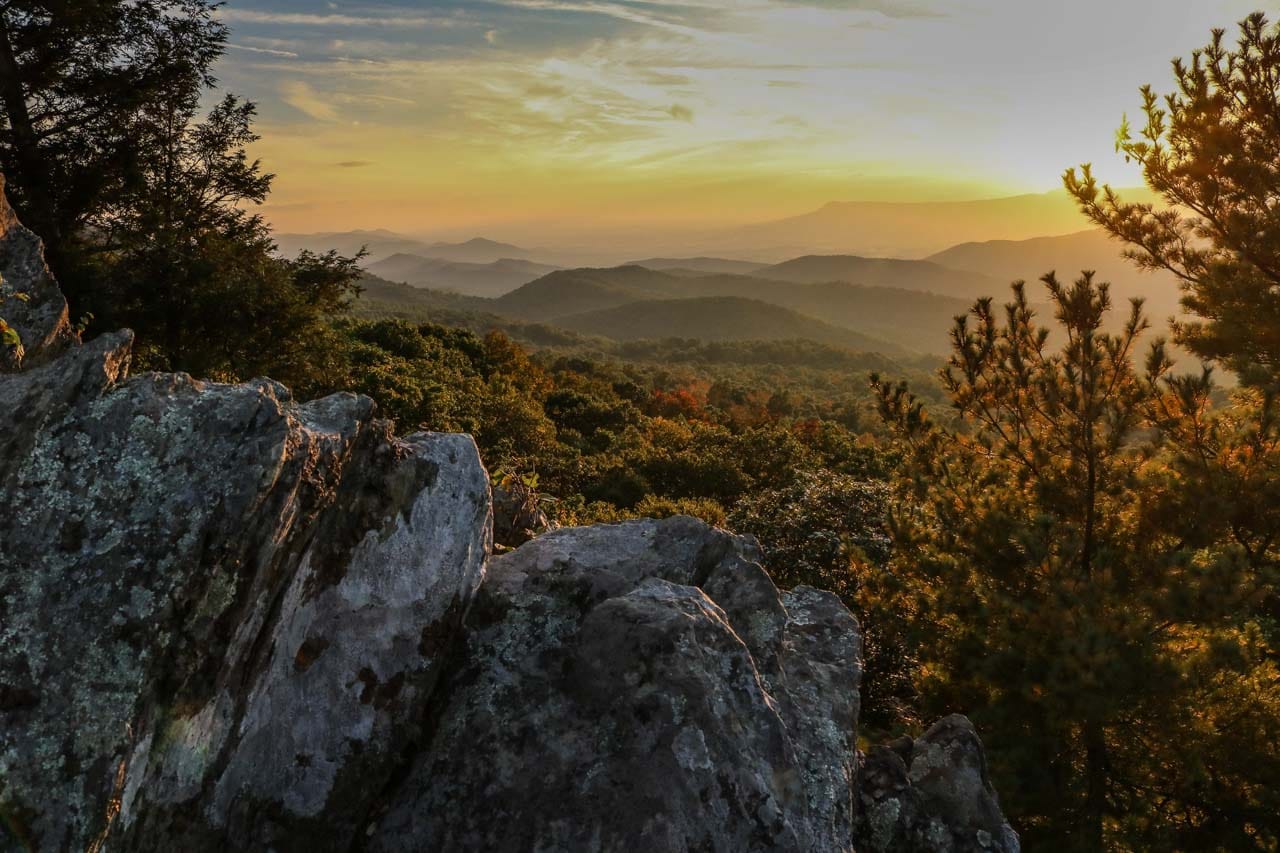
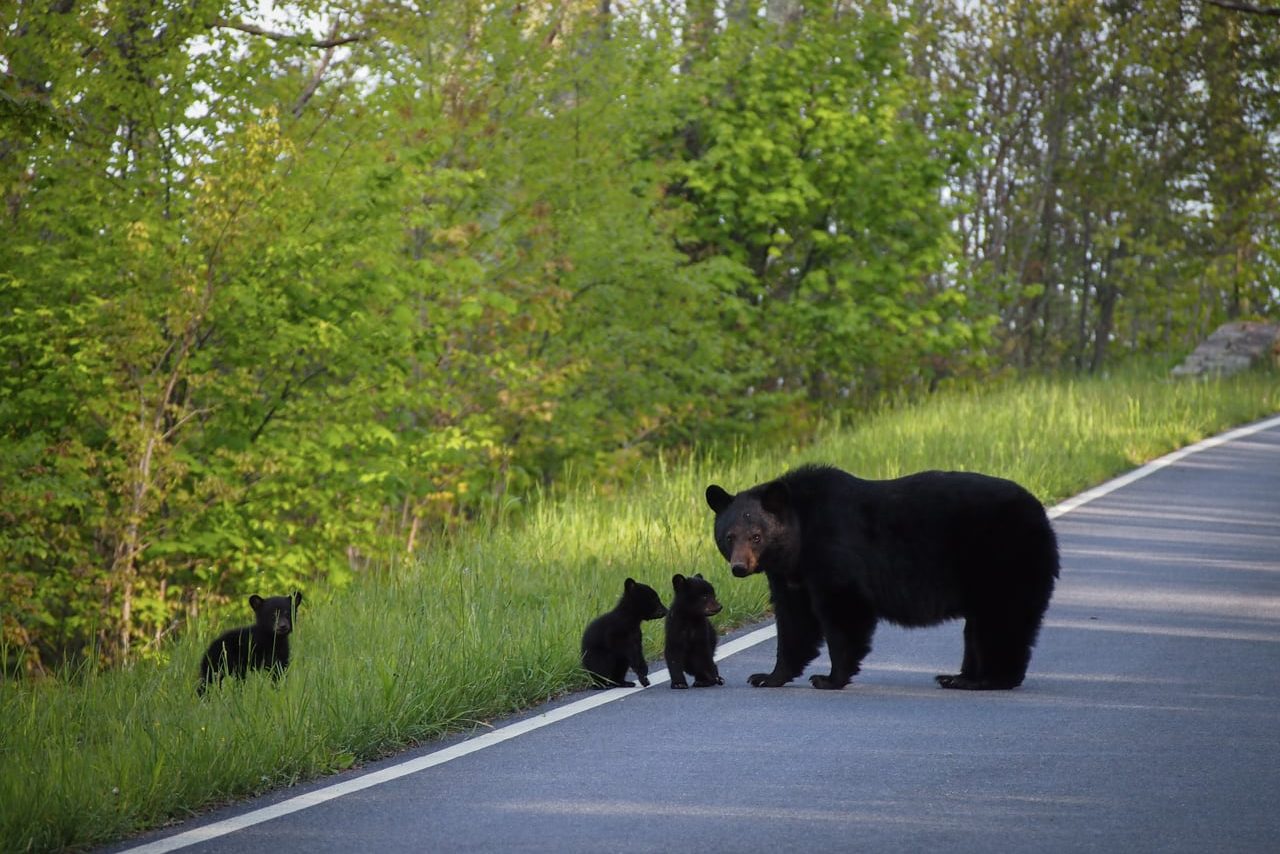
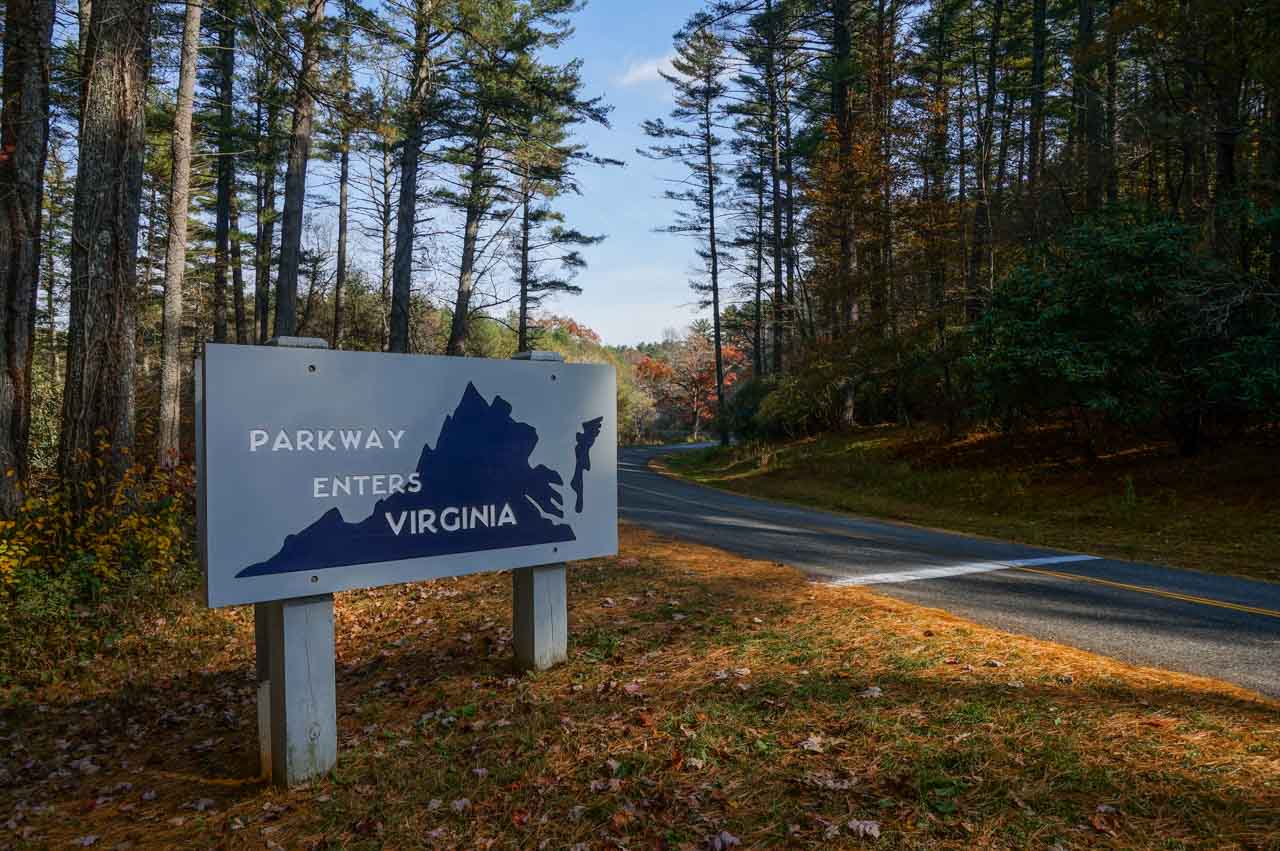
Explore the misty mountains of the East on a meandering drive along the spine of the Blue Ridge Mountains.
Running across much of the South, this subrange of the Appalachians is famous for its historic towns, musical heritage, abundant wildlife, waterfalls and rolling mountain scenery.
It’s at its most beautiful in the fall, when the region’s millions of deciduous trees set the slopes ablaze in hues of reds, yellows, browns and purples.
A Blue Ridge Mountains national park road trip includes two major eastern parks. The route runs from Skyline Drive in Virginia’s Shenandoah National Park to Great Smoky Mountains National Park in North Carolina and Tennessee.
The Blue Ridge Parkway, one of the most visited units in the entire National Park System, connects both parks, meandering along the ridge for 469 miles.
Blue Ridge Mountains National Parks Road Trip Info
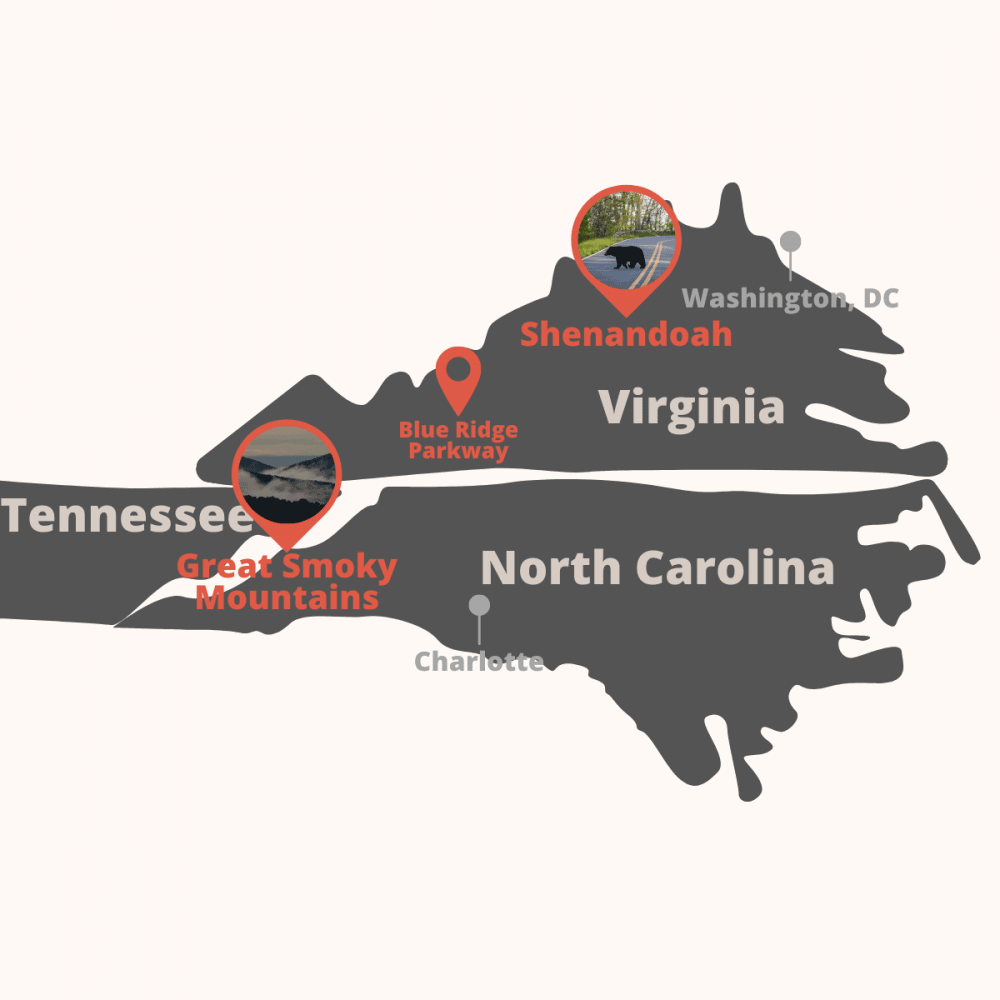
- Shenandoah National Park, VA
- Blue Ridge Parkway, VA & NC
- Great Smoky Mountains National Park, NC & TN
Highlights: Beautiful mountain scenery, historic sites, bluegrass music, waterfalls and scenic drives
Wildlife to Watch For: Black-tailed deer, elk, black bears, wild turkeys, bats, groundhogs
Approximate Distance: 575 miles
Nearest Major Cities: Washington, D.C. and Charlotte
2. Cascade Range Volcanoes
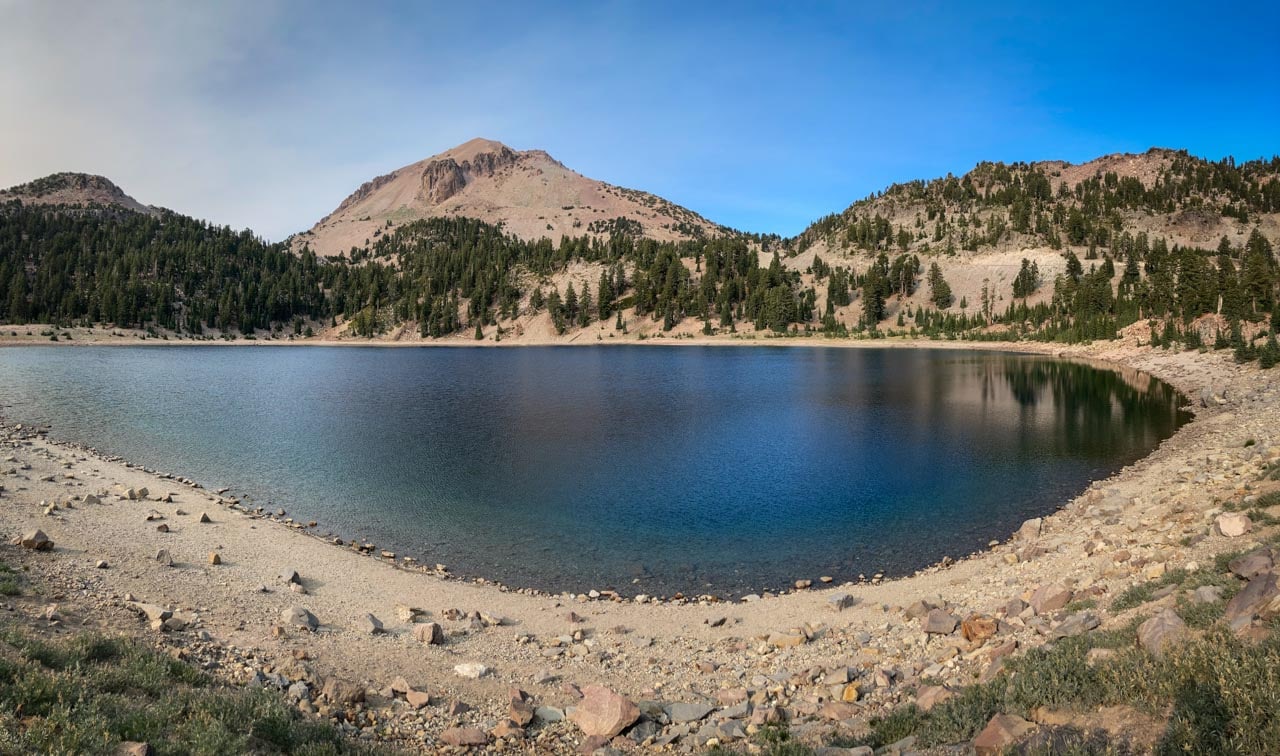
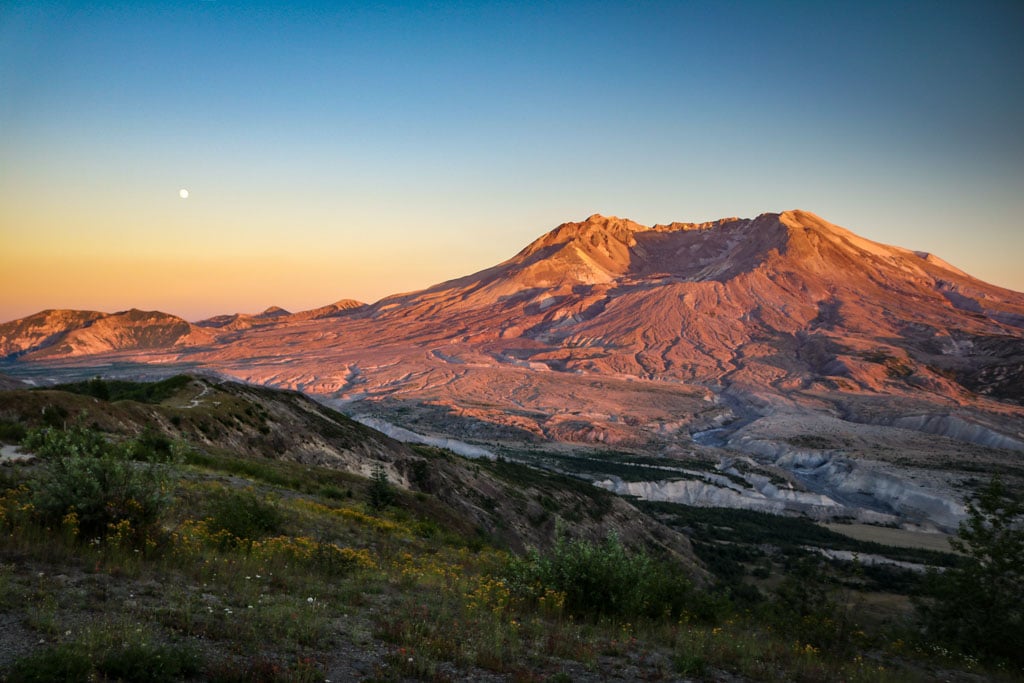
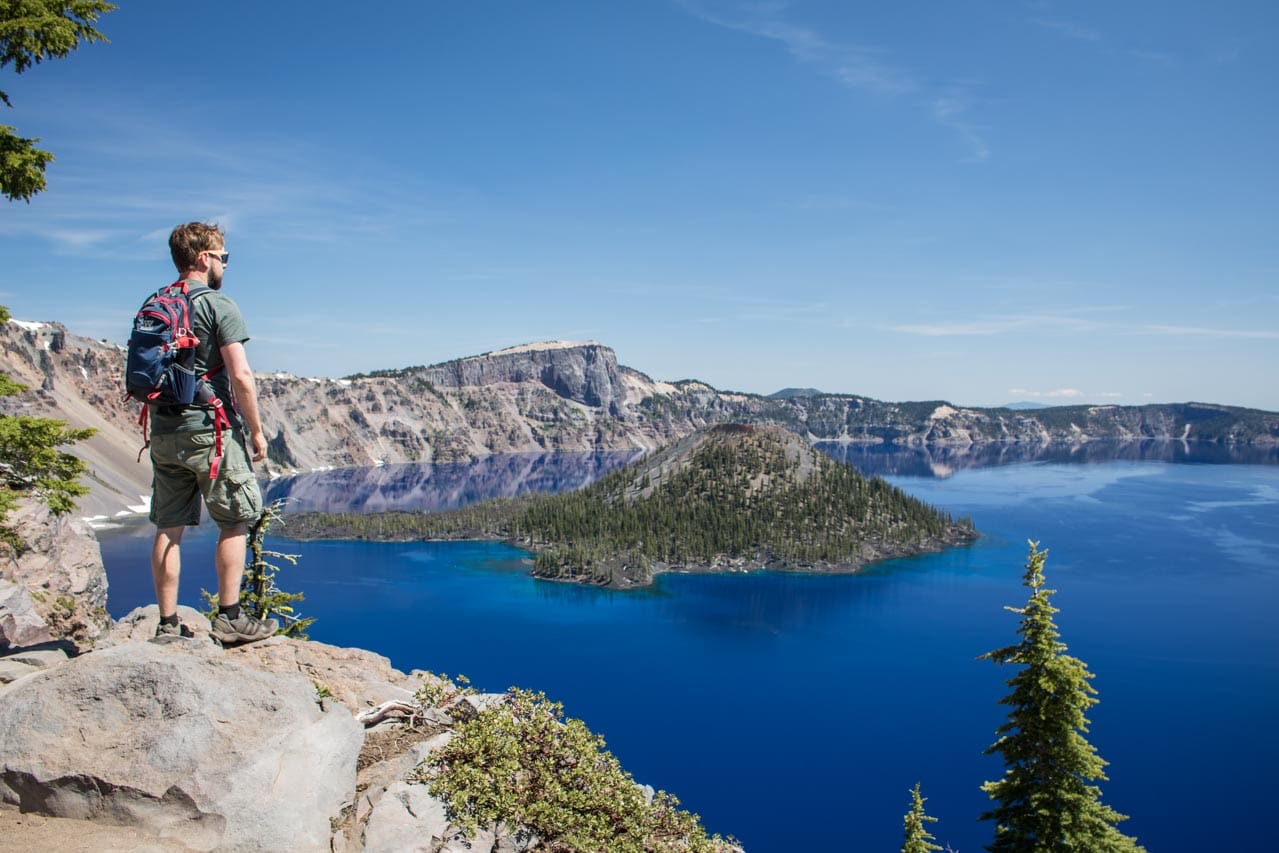
Part of the gigantic Ring of Fire that encircles much of the Pacific, the Cascade Range is dotted with huge volcanoes. This rugged mountain range extends from British Columbia across Washington, Oregon and into Northern California, encompassing much of the Pacific Northwest.
Along its length of 700+ miles, there are more than fifteen major Cascade volcanoes, most of which are active. The last massive eruptions were Mount St. Helens (in 1980) and Lassen Peak (in 1914-1920).
On a road trip to the national parks of the Cascade Range, you’ll travel from Mount Rainier to Crater Lake to Lassen Peak in Lassen Volcanic National Park, three major volcanoes in the region and the centerpieces of their eponymous Pacific Northwest national parks.
Along the way are several other large volcanoes to explore, too. Those include aforementioned Mount St. Helens, but also Mt. Hood, Mount Bachelor, the Newberry Volcano (which is the Cascade Range’s largest volcano by volume) and Mount Shasta. All of those are managed by the U.S. Forest Service.
Cascade Range Volcanoes National Parks Road Trip Info
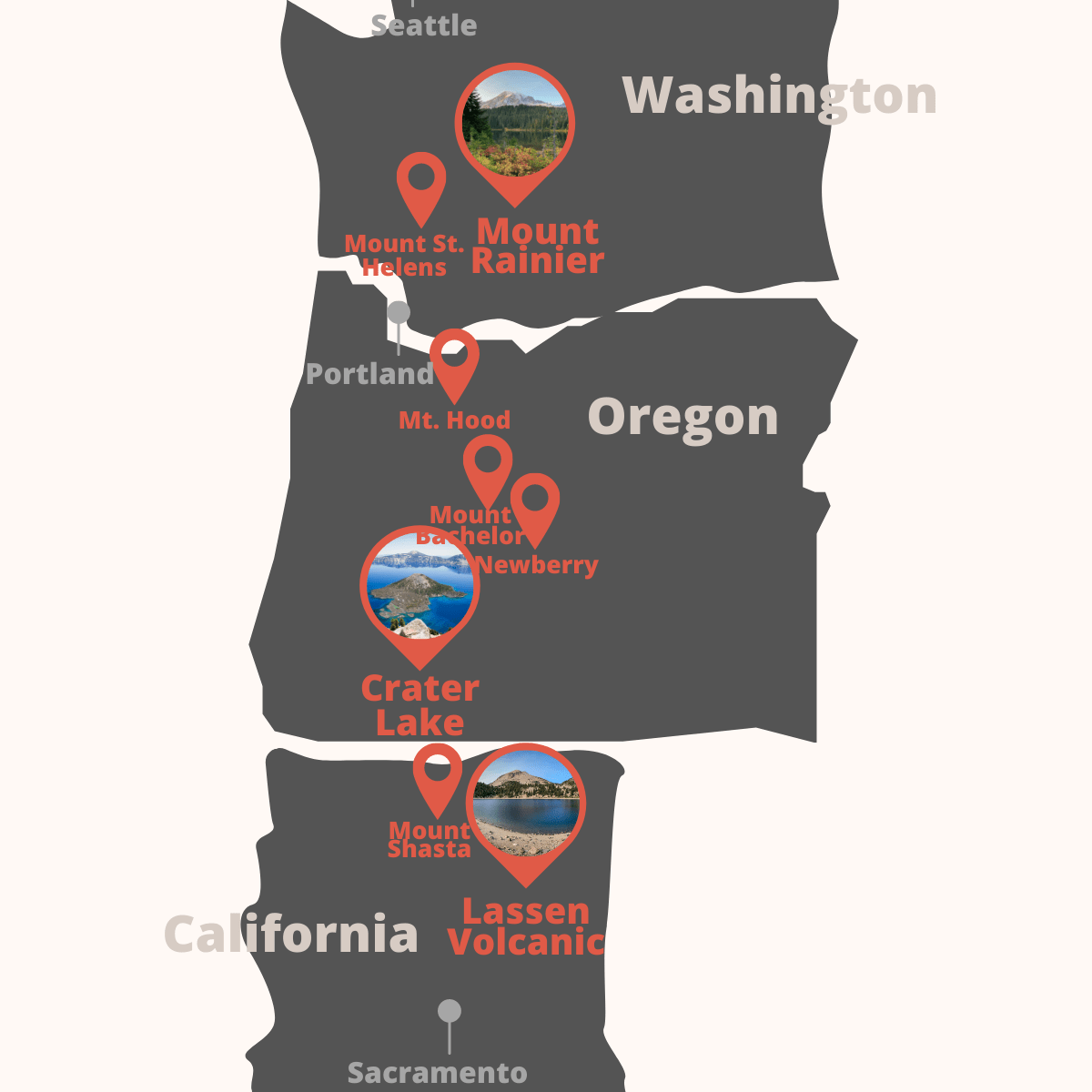
- Mount Rainier National Park, WA
- Mount St. Helens National Volcanic Monument, WA
- Mt. Hood National Forest, OR
- Deschutes National Forest (Mount Bachelor), OR
- Newberry National Volcanic Monument, OR
- Crater Lake National Park, OR
- Shasta-Trinity National Forest, CA
- Lassen Volcanic National Park, CA
Highlights: Volcanoes, alpine lakes and meadows, snowshoeing and other winter sports, vast forests, glaciers
Wildlife to Watch For: Mountain goats, American pikas, marmots, black bears, elk, red foxes
Approximate Distance: 850 miles
Nearest Major Cities: Seattle, Portland and Sacramento
3. Canyons of the Colorado Plateau
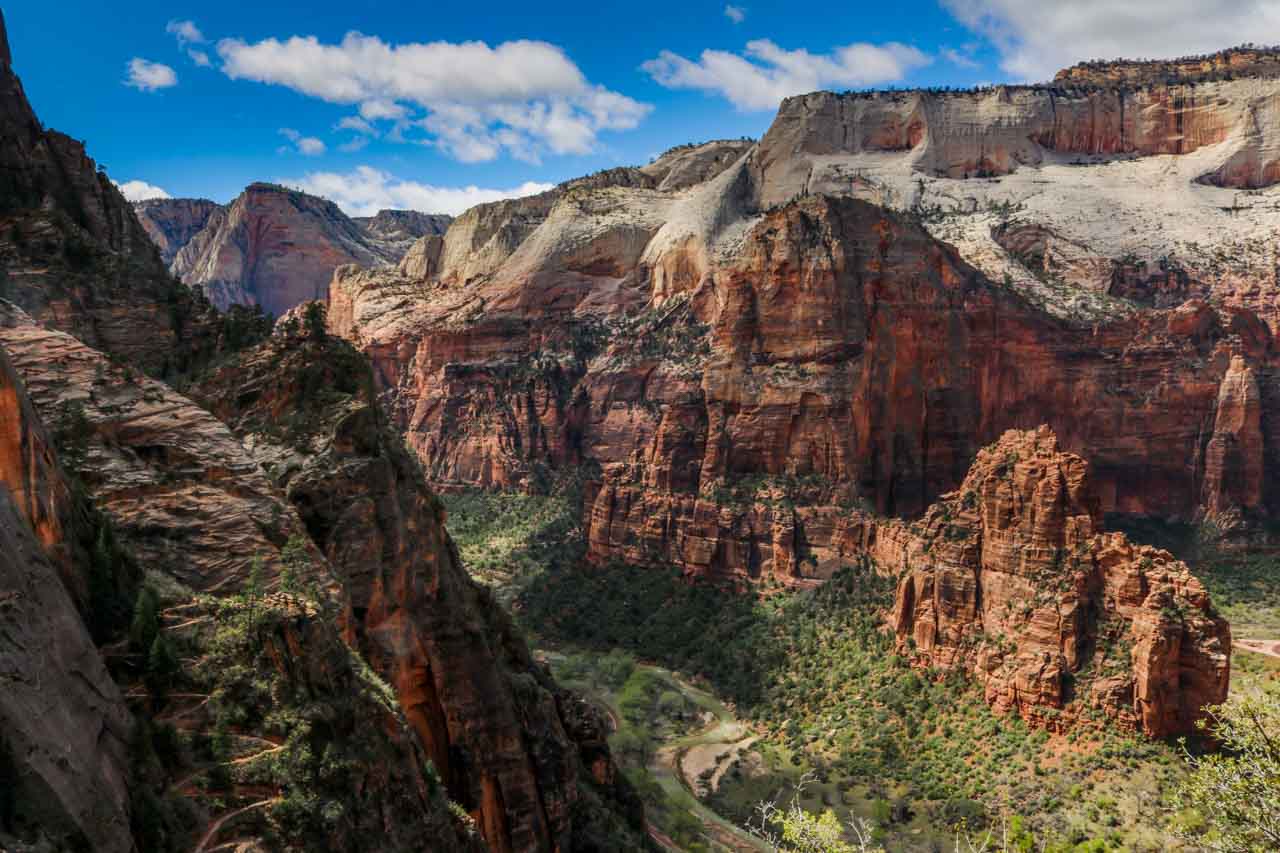
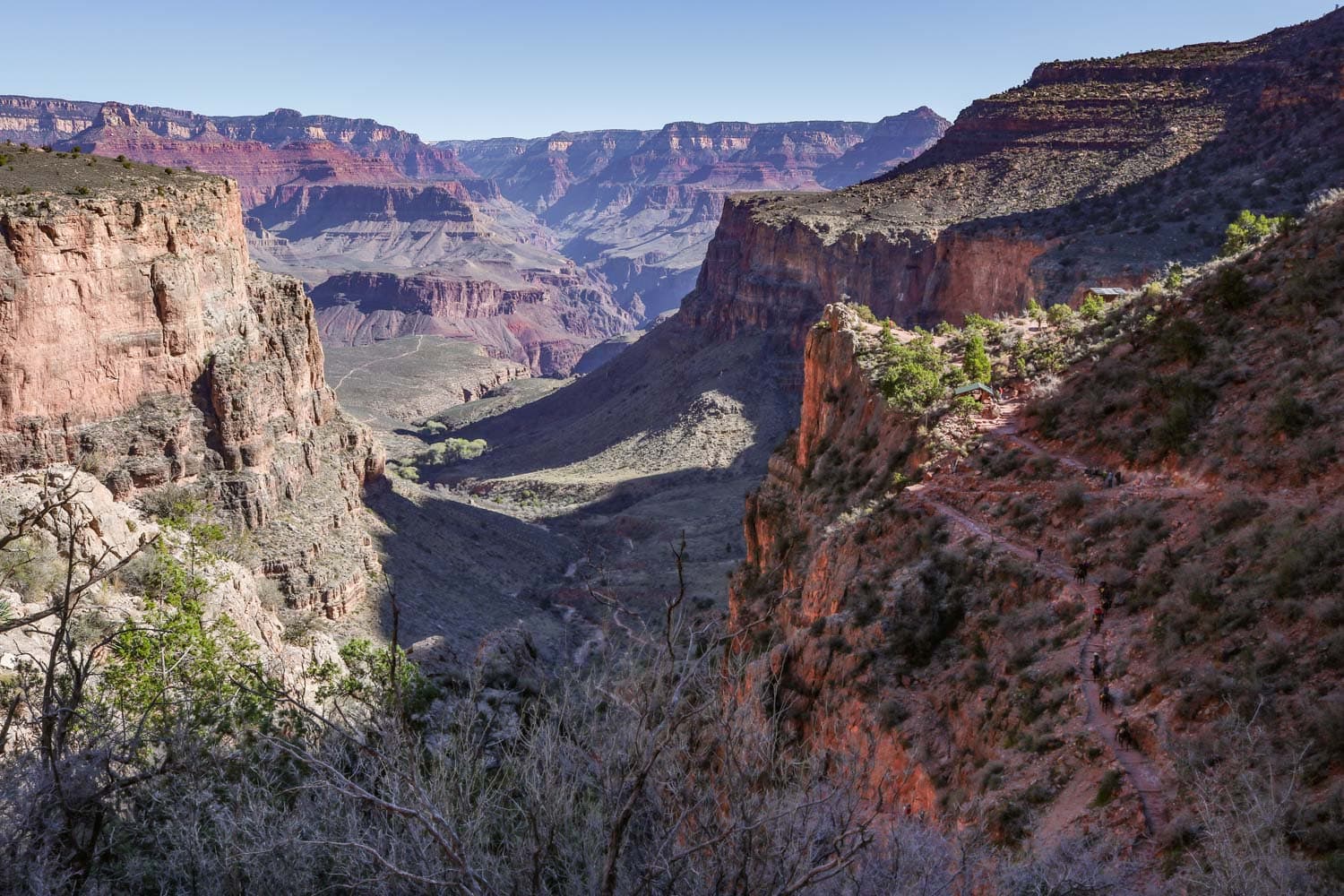
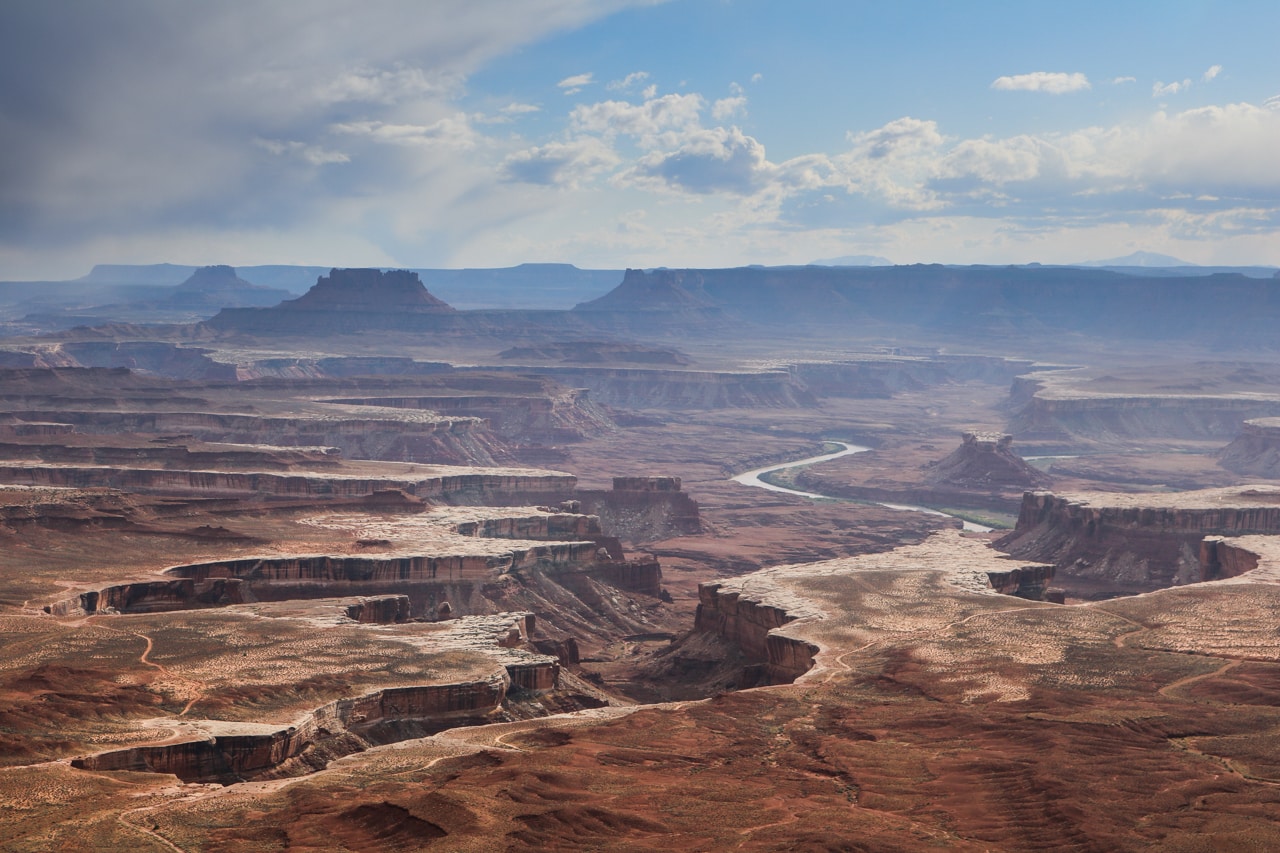
Home to the densest concentration of national parks of any region in the USA, the Colorado Plateau is one of America’s greatest road trip destinations.
The region encompasses much of the states of Colorado, Utah, Arizona and New Mexico—the Four Corners area. You’ll find no fewer than eight spectacular parks here, which you can visit on a long loop drive around the entire region.
From Utah’s Zion and Bryce Canyon (and three other Utah national parks) to the cliff dwellings in Mesa Verde National Park and the sheer majesty of the Grand Canyon, this is truly one of the best national parks road trip imaginable.
On the way, you can enjoy magnificent desert scenery, canyons, gorges, rock formations, and a wealth of archaeological and historic sites.
On top of that, this sprawling region of canyons, hoodoos and arches is easily accessible from many directions. Las Vegas, Salt Lake City and Flagstaff all make for suitable starting points for this once-in-a-lifetime national parks road trip.
Canyons of the Colorado Plateau National Parks Road Trip Info

- Zion National Park, UT
- Bryce Canyon National Park, UT
- Capitol Reef National Park, UT
- Arches National Park, UT
- Canyonlands National Park, UT
- Mesa Verde National Park, CO
- Petrified Forest National Park, AZ
- Grand Canyon National Park, AZ
Highlights: Vast canyons, river gorges, rock formations, Native American and archaeological sites
Wildlife to Watch For: Mule deer, desert bighorn sheep, pronghorn, kangaroo rats, hawks, ravens
Approximate Distance: 1,250 miles
Nearest Major Cities: Las Vegas, Flagstaff and Salt Lake City
- Zion accommodation
- Bryce Canyon accommodation
- Capitol Reef accommodation
- Canyonlands & Arches accommodation
- Mesa Verde accommodation
- Petrified Forest accommodation
- Grand Canyon accommodation
4. Arizona’s Ancient & Wild West
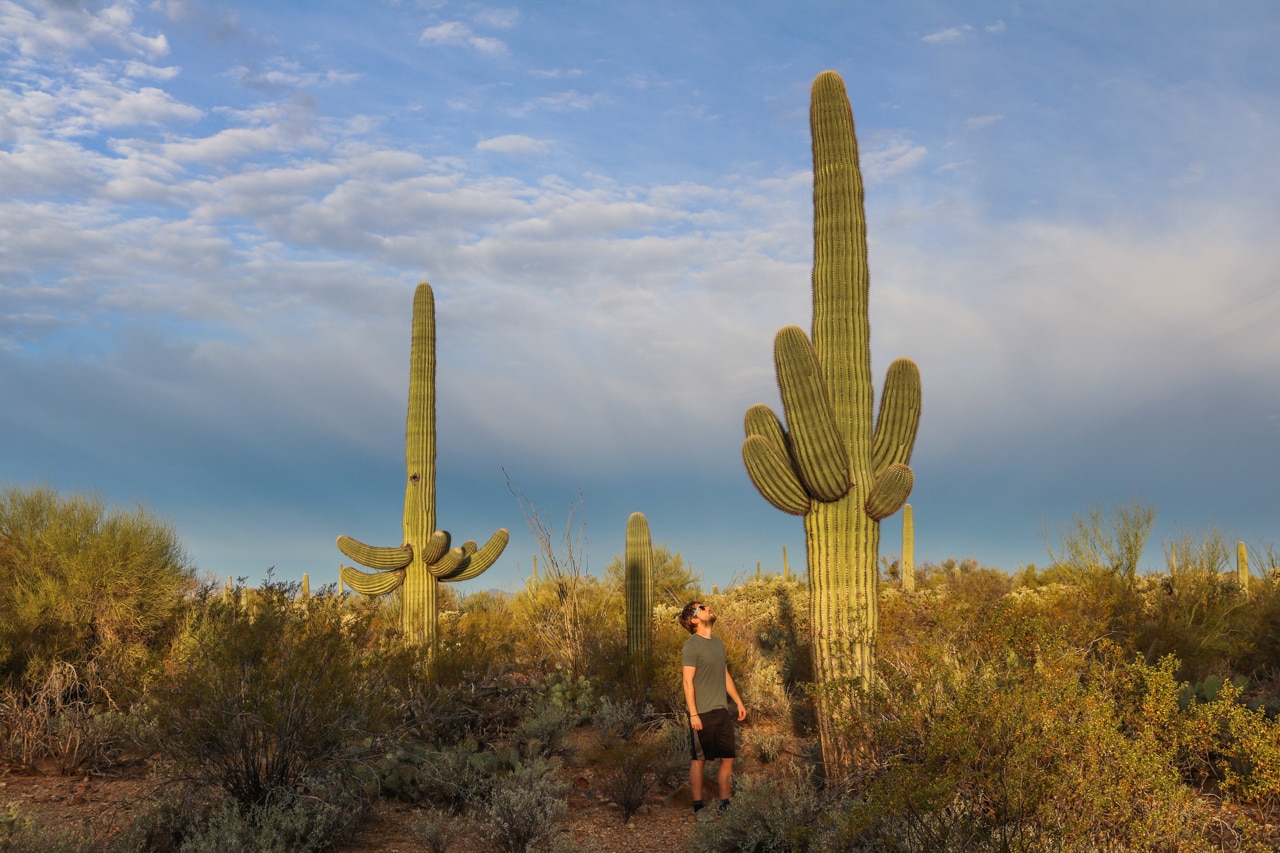
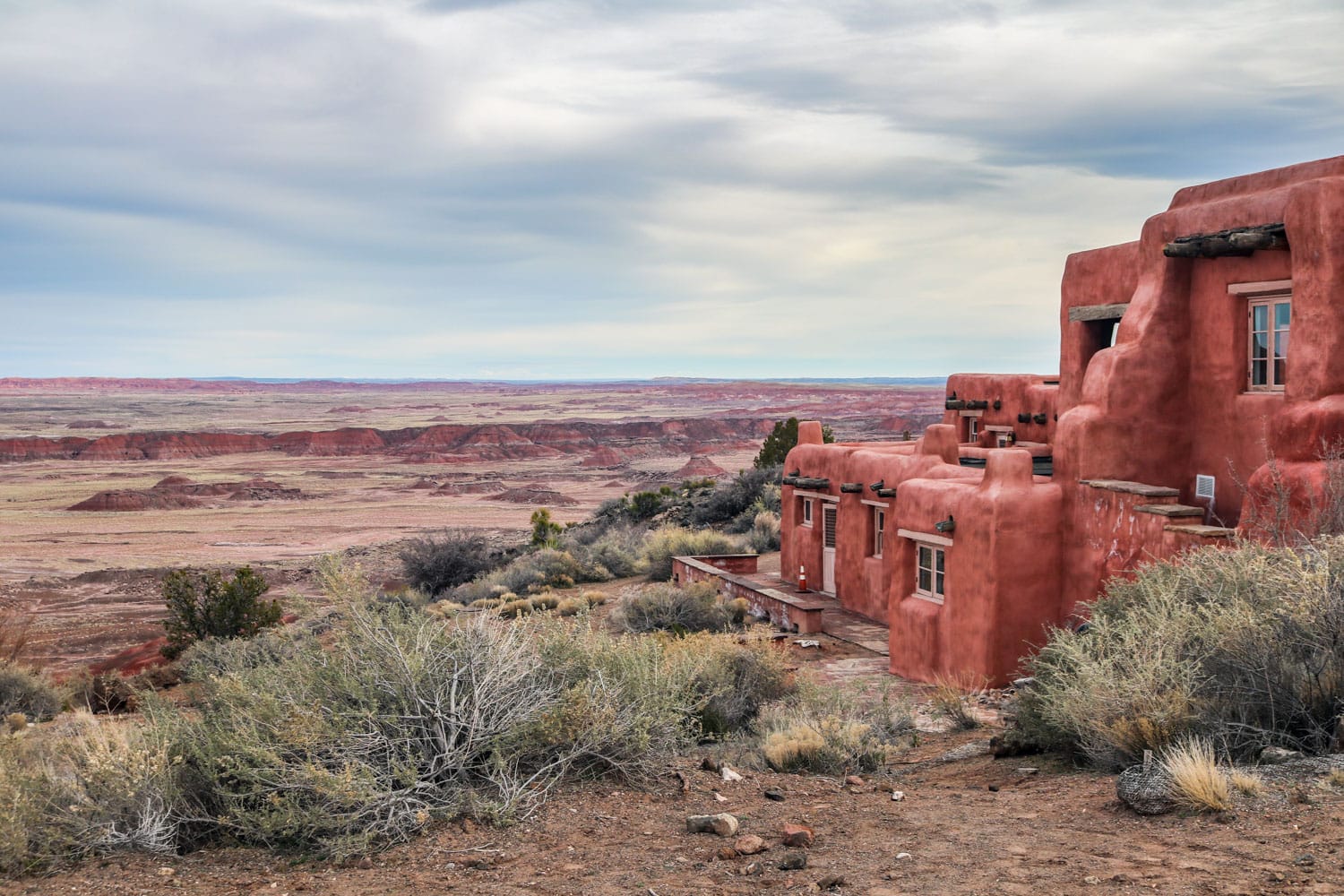
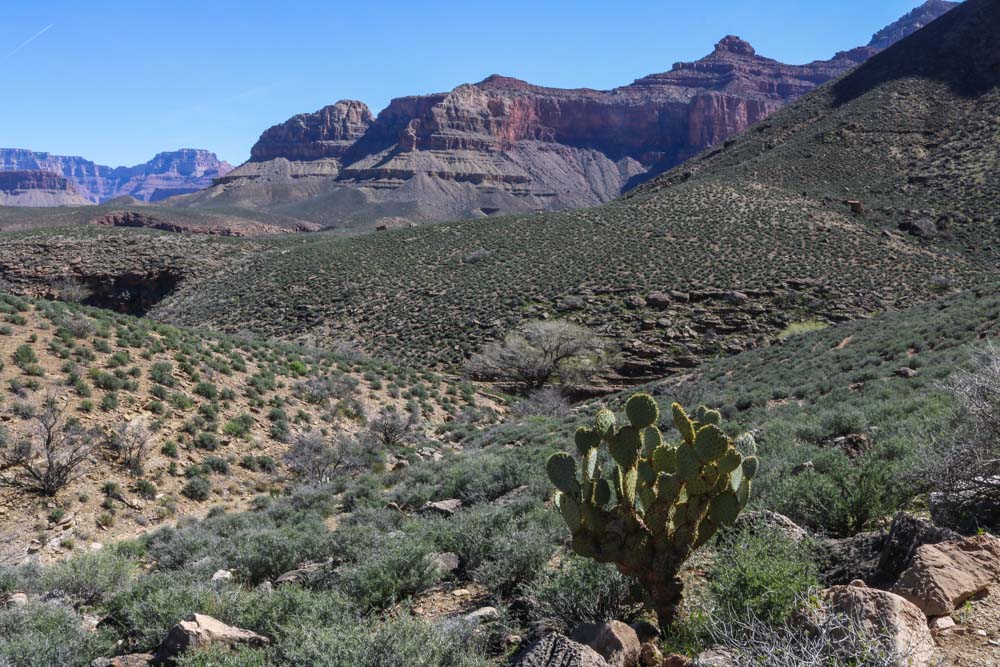
Home to two dozen National Park Service sites, Arizona is an ideal destination for national park road trips. In the deserts of this Southwestern state, you’ll find beautiful landscapes, a plethora of outdoor activities and countless Native American archaeological sites.
An Arizona national parks itinerary is usually built around the state’s three national parks: Saguaro, Petrified Forest and Grand Canyon. (It makes for a great extension of the Colorado Plateau national parks road trip above.)
In addition to those national parks, there are also numerous national monuments in Arizona, including such amazing ones as Canyon de Chelly, Wupatki, Organ Pipe Cactus, Navajo and Casa Grande Ruins.
Explore vast forests of majestic saguaro cacti, walk through plains filled with petrified wood, admire breathtaking views from the Grand Canyon rim, and learn about Native American history on this world-class road trip.
The route also includes a beautiful section of Route 66 and, additionally, can take you to other famous locations in the area, particularly Antelope Canyon and Horseshoe Bend.
Arizona’s Ancient & Wild West National Parks Road Trip Info
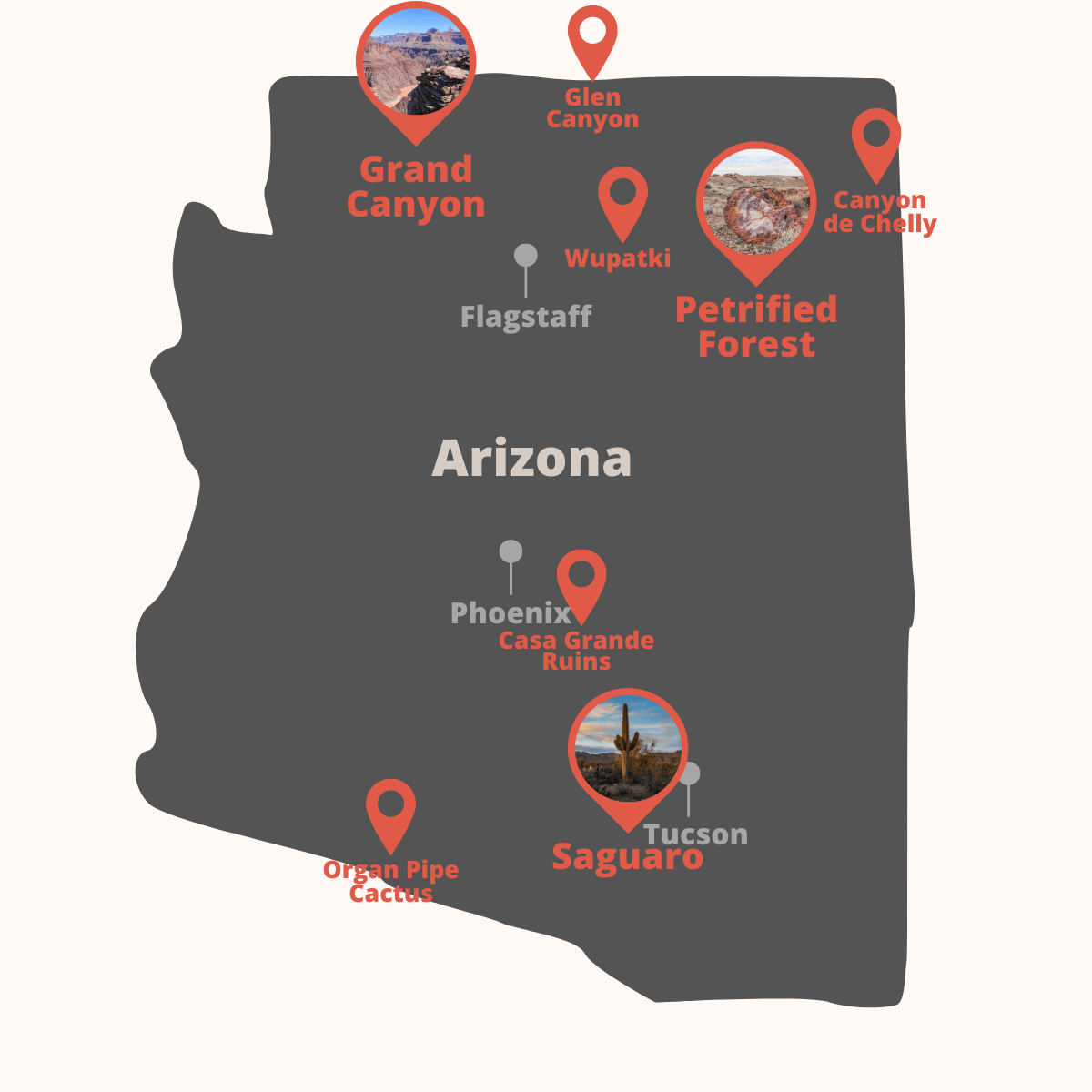
- Grand Canyon National Park
- Wupatki National Monument
- Glen Canyon National Recreation Area
- Canyon de Chelly National Monument
- Petrified Forest National Park
- Saguaro National Park
- Organ Pipe Cactus National Monument
- Casa Grande Ruins National Monument
Highlights: Cactus forests, petrified wood, badlands, Grand Canyon, Native American sites, desert scenery, Route 66
Wildlife to Watch For: Gila monsters, collared peccaries, desert tortoises, roadrunners, horned lizards, kangaroo rats, ravens, desert bighorn sheep
Approximate Distance: 1,300 miles
Nearest Major Cities: Flagstaff, Phoenix and Tucson
5. Washington State’s Triple Crown
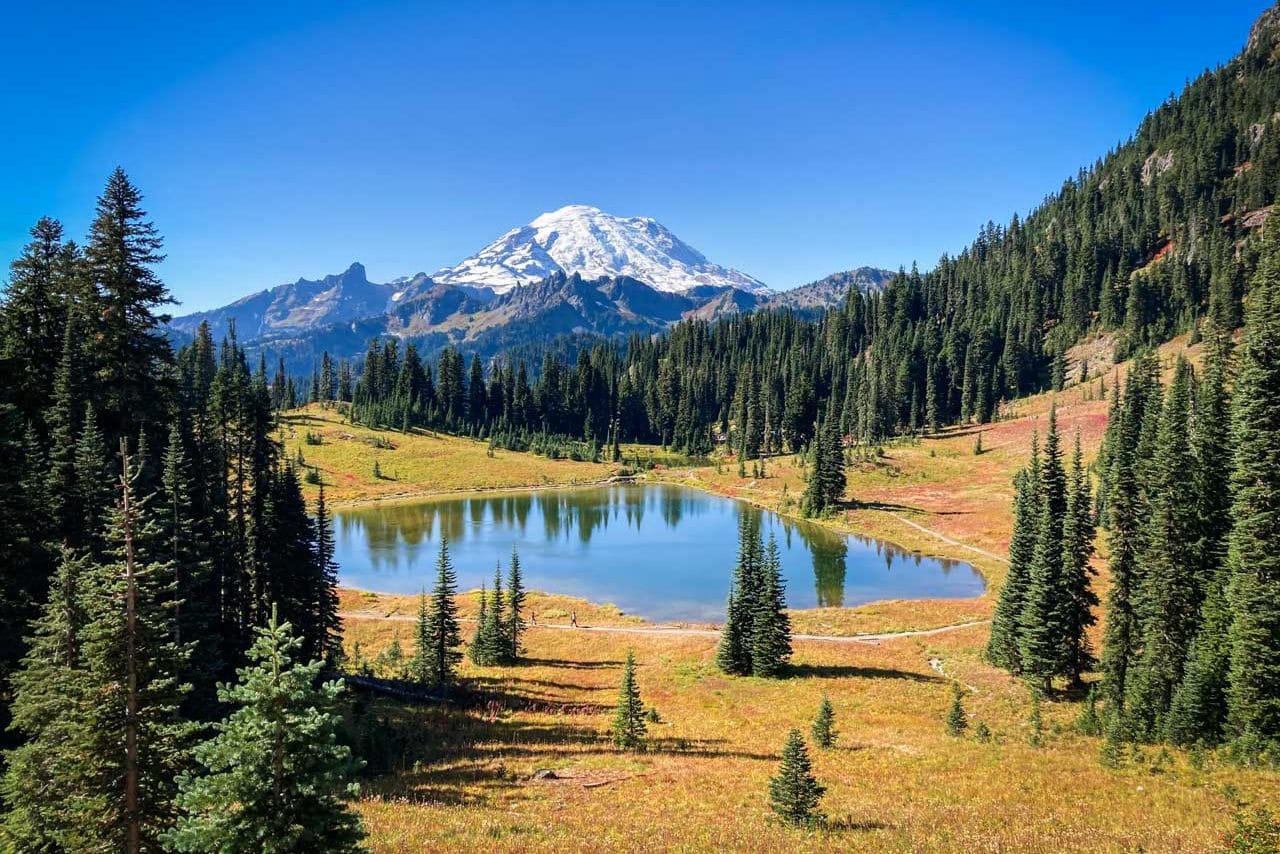
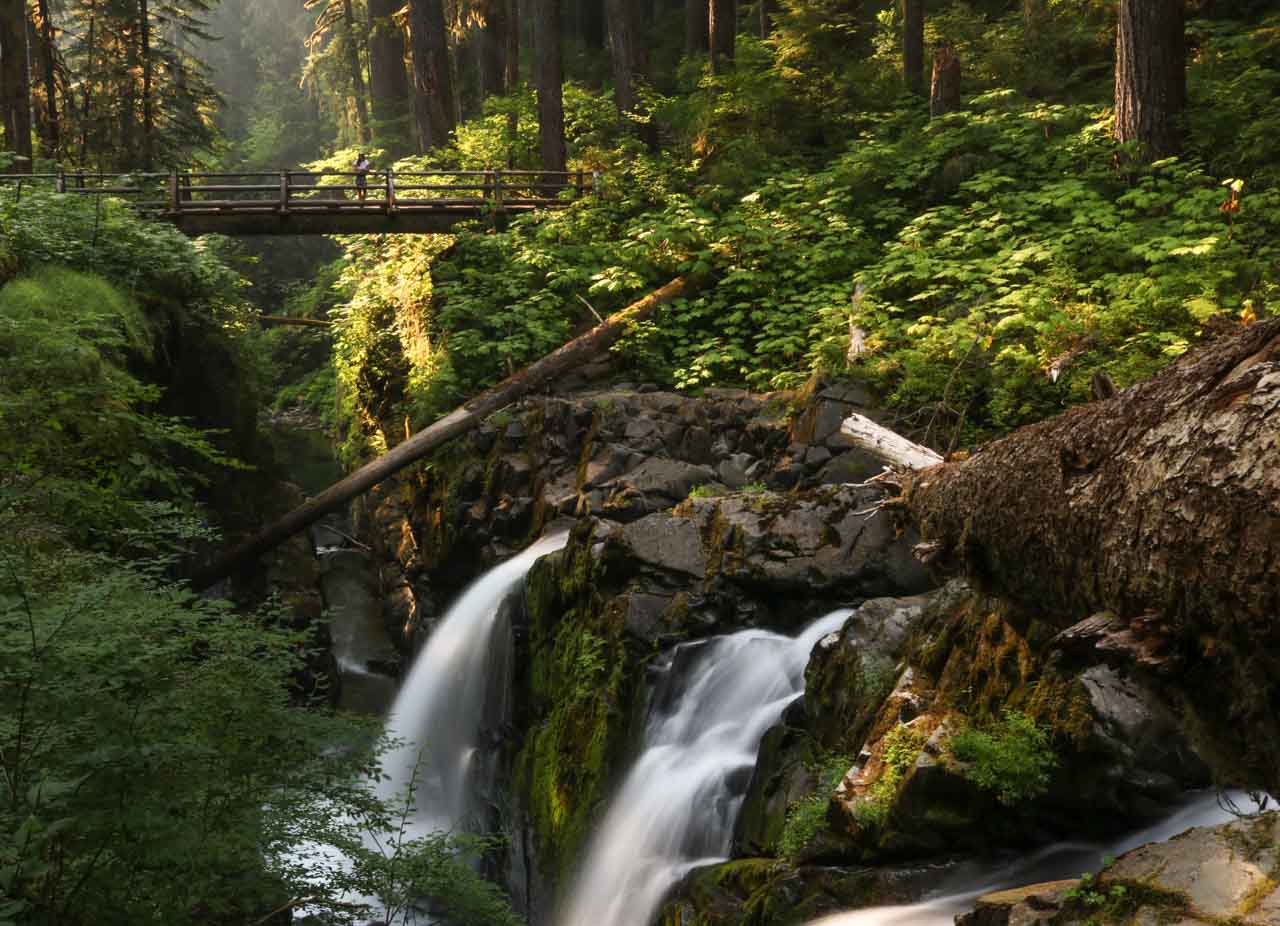
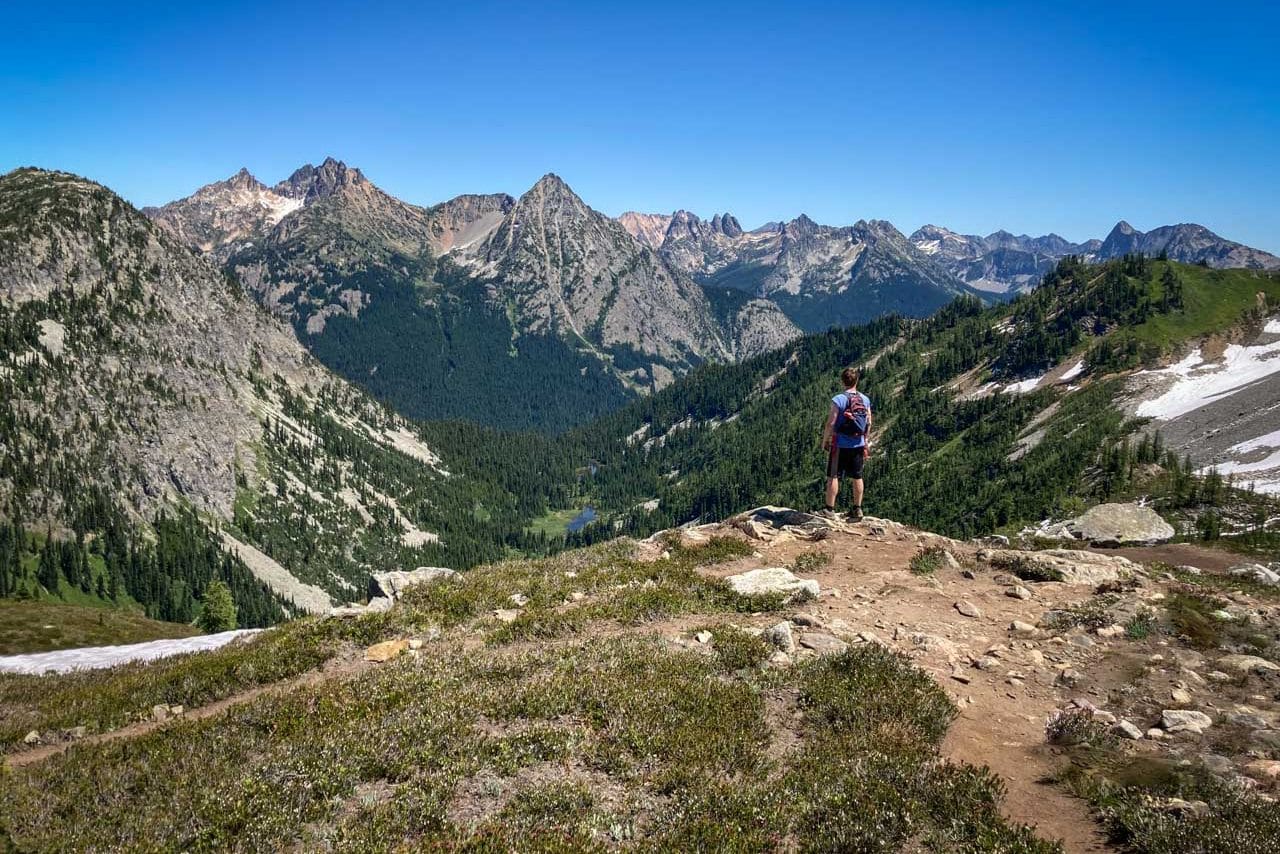
The three national parks in Washington State form a triangle around Seattle, which is the best starting point to explore these incredibly diverse parks.
From Olympic National Park to mighty Mount Rainier and the spectacular North Cascades, you can enjoy breathtaking mountain scenery, hike in mossy rain forests, watch for whales and sea lions on the Pacific coast, and so much more.
This epic road trip offers a little bit of everything that makes the Pacific Northwest such a beautiful region. It will take you to the busy wildflower-filled meadows of Mount Rainier, the windy beaches of the Olympic Peninsula and to the remote mountain wilderness of the North Cascades.
Whether you like scenic drives, camping, rock climbing, hiking, cycling, wildlife viewing or kayaking, you’ll find myriad opportunities to do it in Washington’s triple crown of national parks.
Washington State’s Triple Crown National Parks Road Trip Info
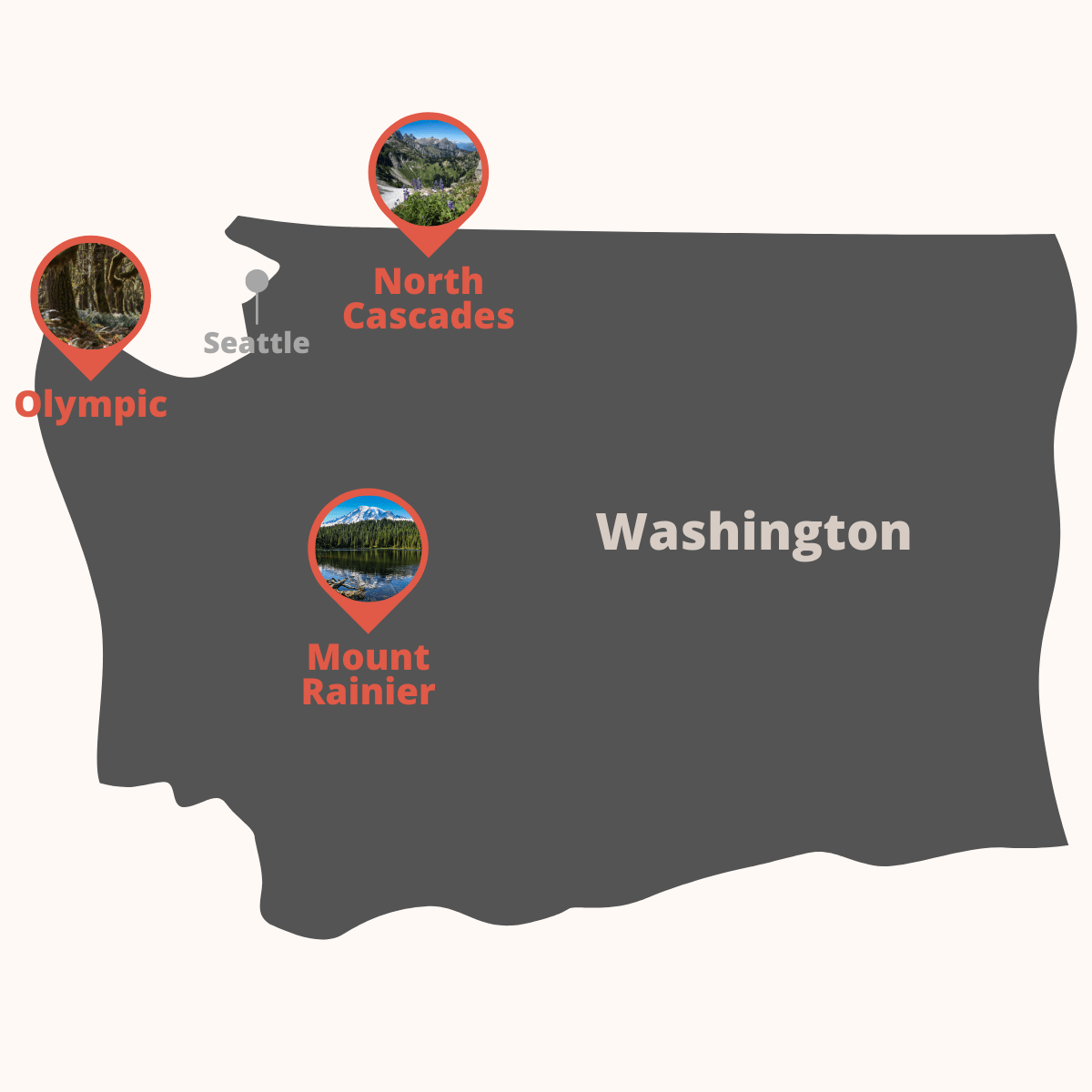
Highlights: Temperate rain forests, wild Pacific coastline, massive volcano, alpine lakes, rivers, glaciers and rugged mountains
Wildlife to Watch For: Whales, sea lions and otters, bald eagles, Roosevelt elk, mountain goats, marmots, American pikas, black bears, mountain lions, salmon
Approximate Distance: 950 miles
Nearest Major City: Seattle
6. Southern California Deserts
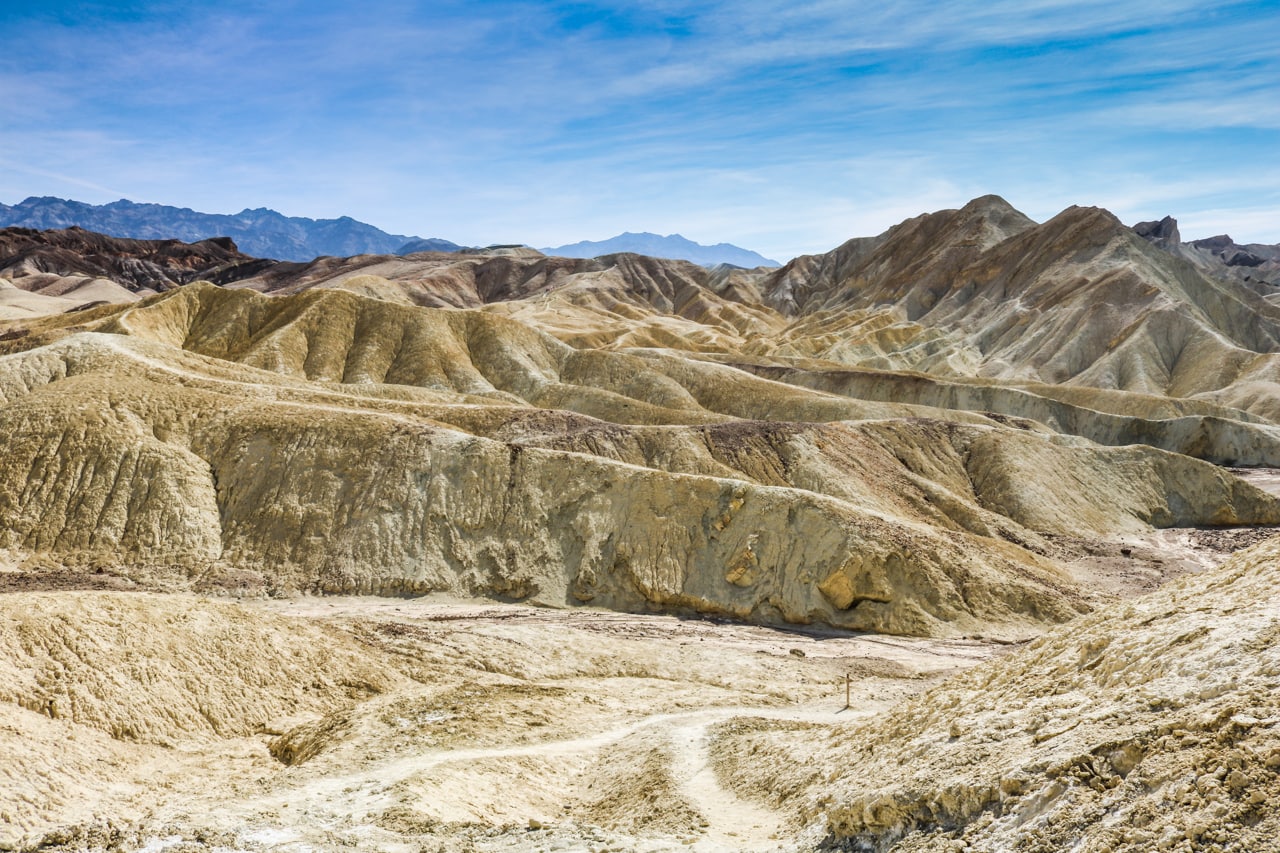
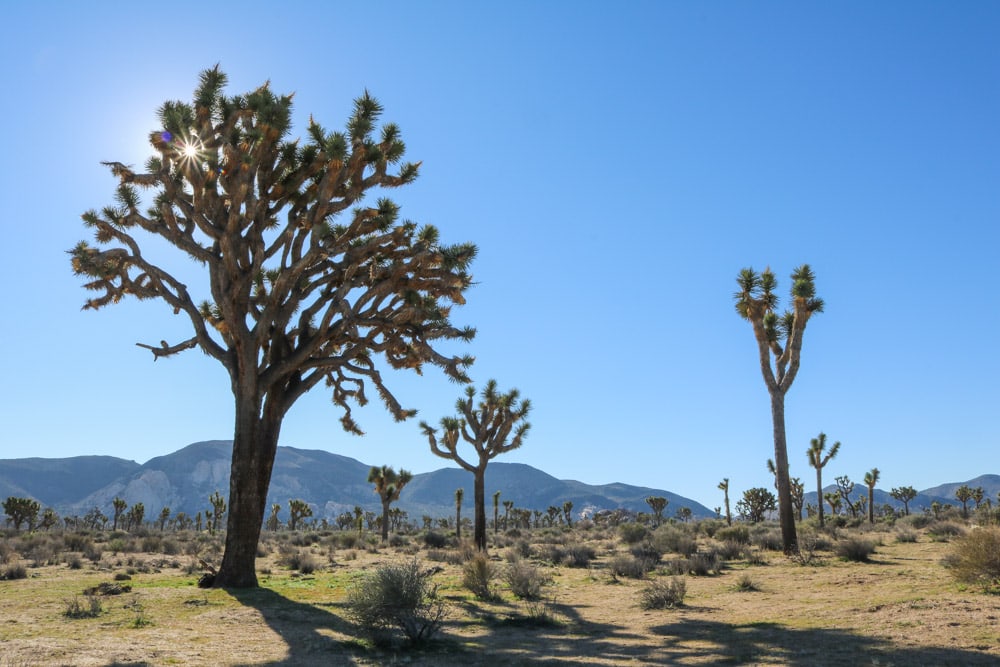
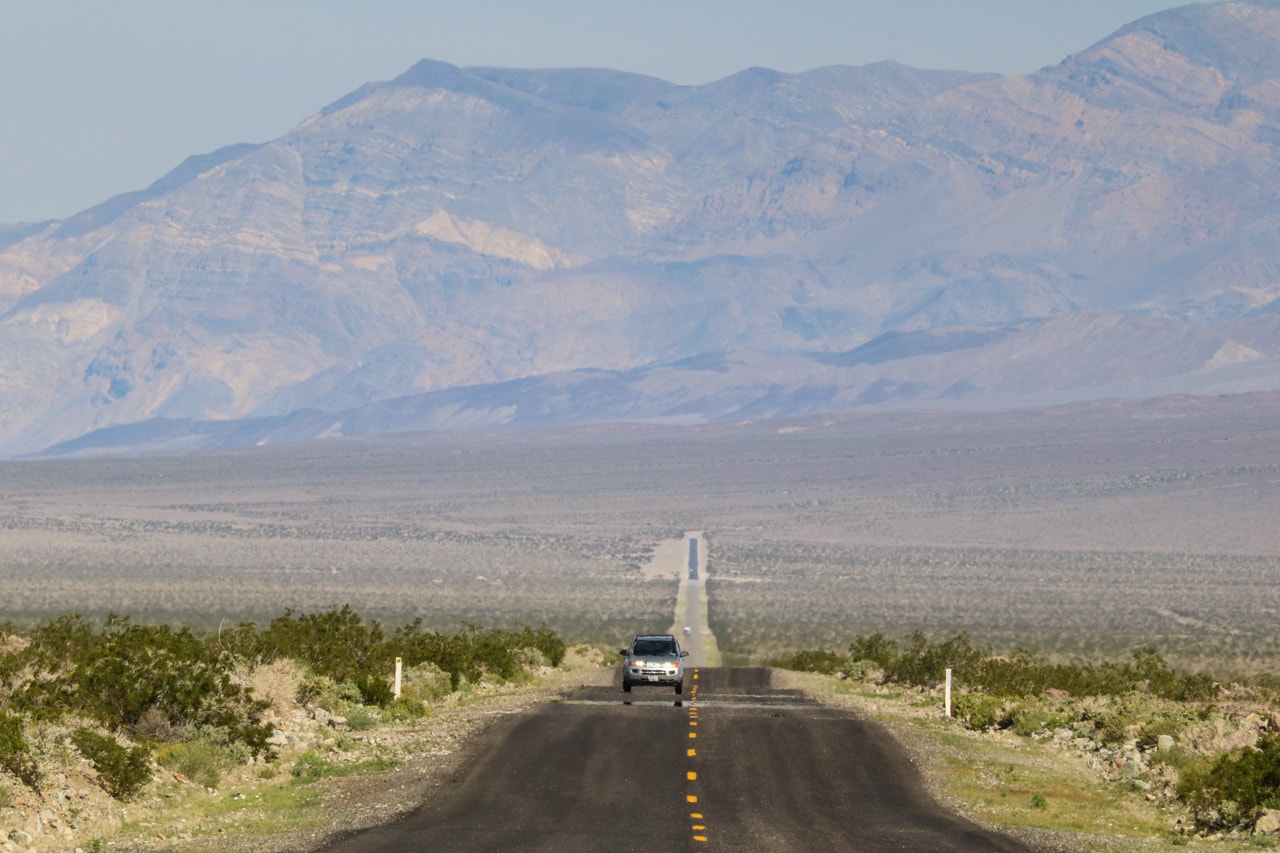
The meeting point of the Colorado and Mojave Deserts, Southern California is characterized by arid hills, vast desert plains, salt flats, unique vegetation and historic (gold-mining) towns. A Southern California national parks road trip brings you to some of America’s most remarkable and extreme places.
From Joshua tree forests in its eponymous Joshua Tree National Park to the lowest point in North America—Badwater Basin in Death Valley National Park—this world-class drive crosses historic Route 66 and Mojave National Preserve.
Numerous campgrounds dot both national parks, many of which are first-come first-served and provide easy access to amazing hiking trails and viewpoints.
For a fun detour on this road trip, you can also visit the underrated Mojave National Preserve, which is also home to Joshua trees and sprawling desert landscapes.
Also offering you an insight into California’s pioneering past, this is a desert road trip unlike any other on Earth.
Southern California Deserts National Parks Road Trip Info
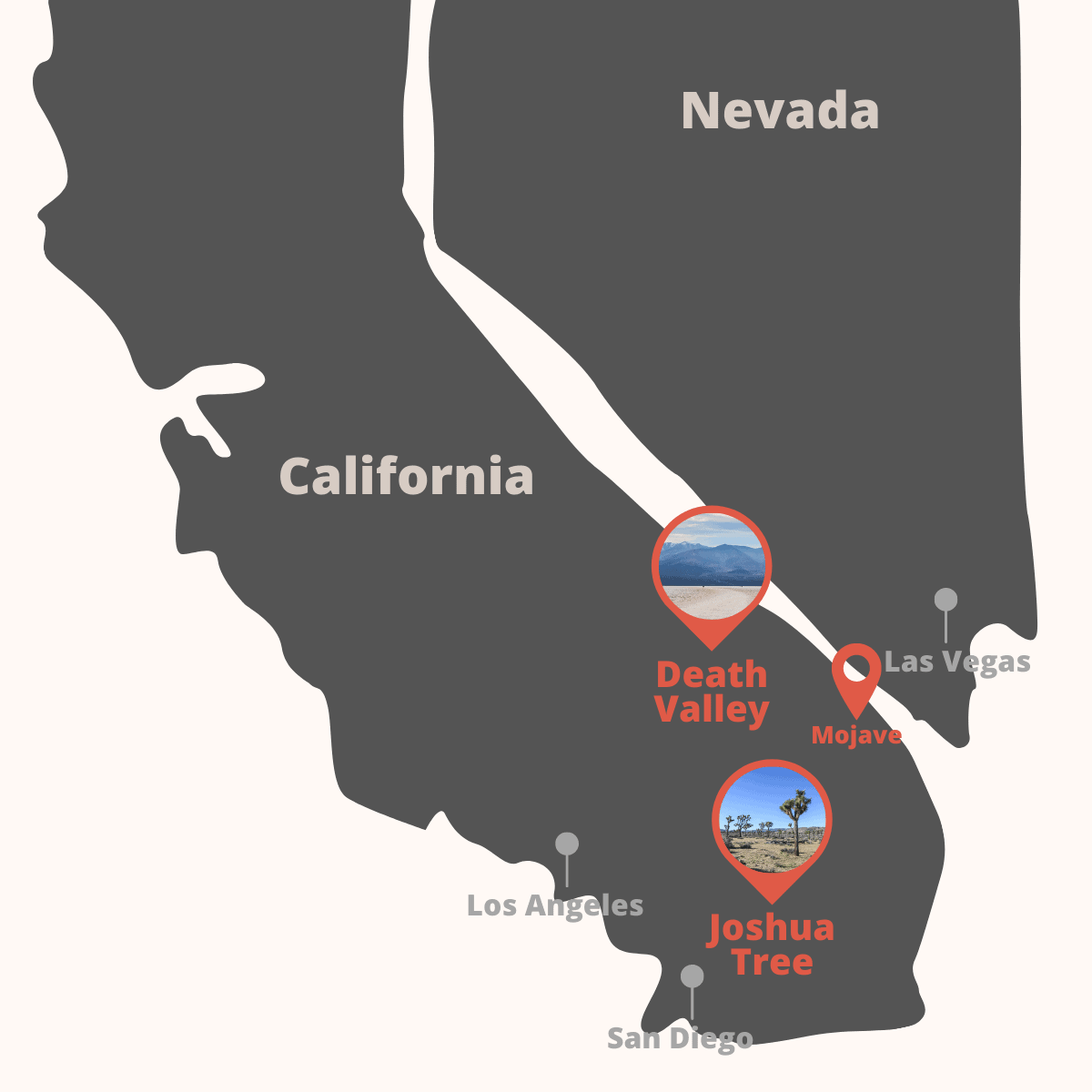
Highlights: Joshua tree forests, desert scenery, mountains, salt flats, sand dunes and historic sites
Wildlife to Watch For: Coyotes, roadrunners, rattlesnakes, desert tortoise, desert bighorn sheep
Approximate Distance: 725 miles
Nearest Major Cities: Los Angeles, San Diego and Las Vegas
7. The Circle of Discovery
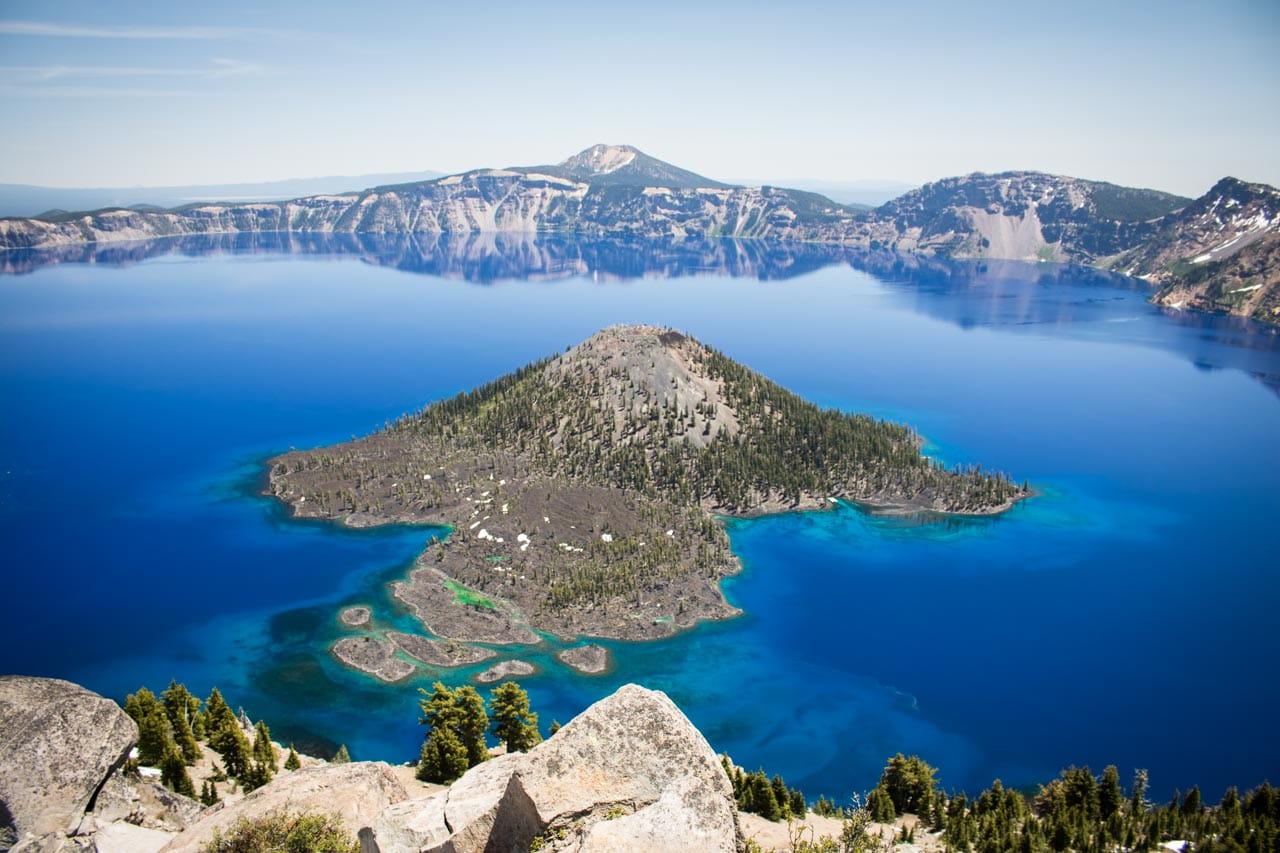
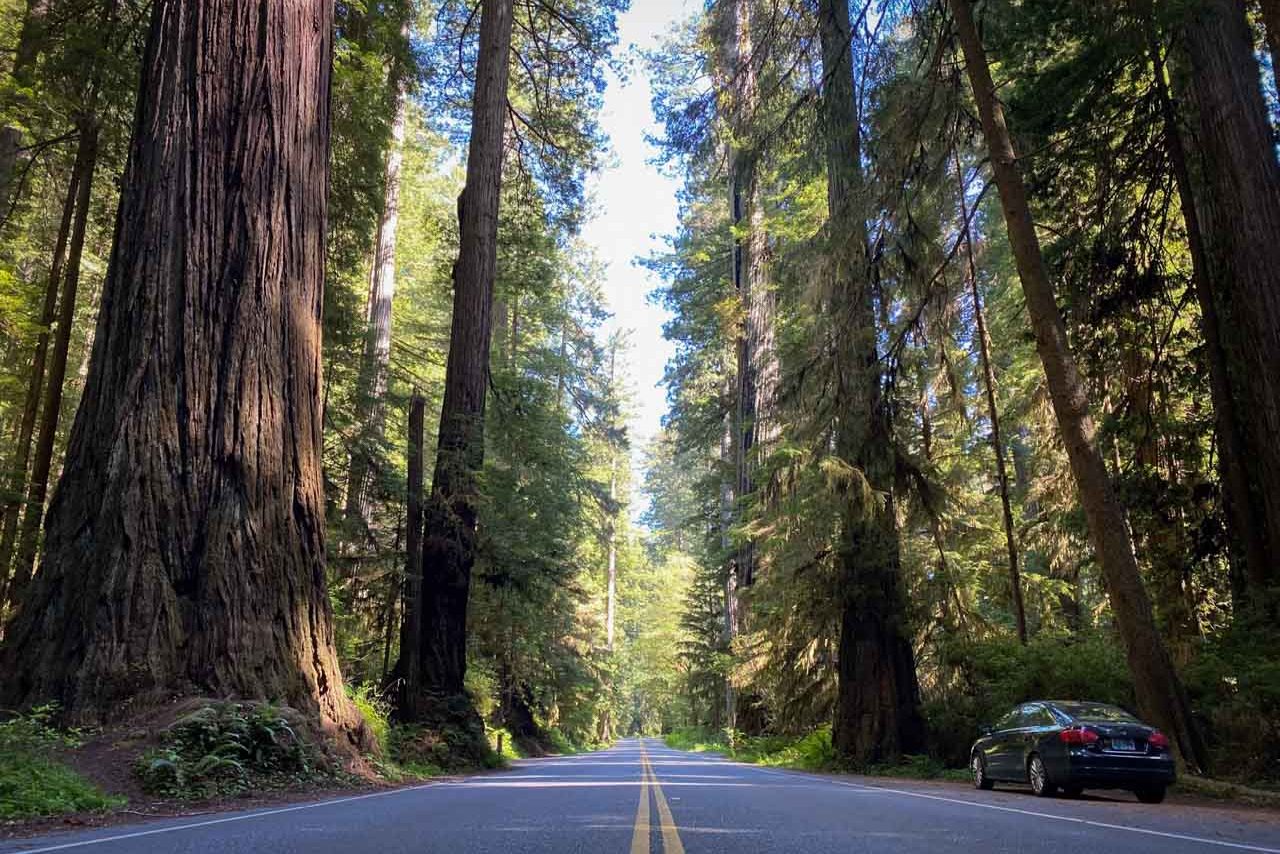
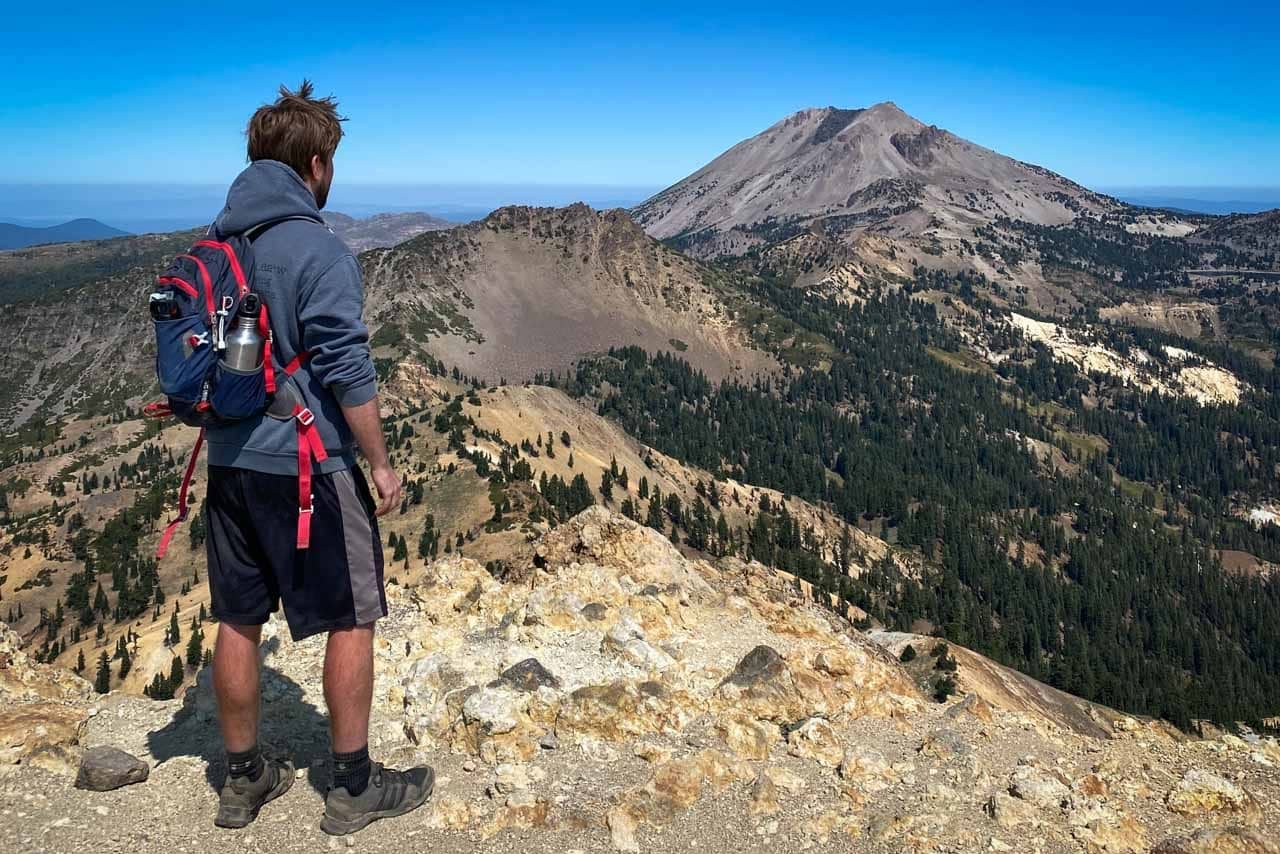
Arguably the most varied of all national park road trips on this list, the Circle of Discovery is a scenic route around Southern Oregon and Northern California.
It takes in three major national parks, as well as several smaller National Park Service units, such as the Lava Beds National Monument and Oregon Caves National Monument.
The nearest large cities to this remote region are San Francisco, Sacramento and Portland, both at least three hours away, while closer gateway towns include Medford and Redding.
On this sensational route, you’ll discover the wonders of the southern Cascade Range, including famous volcanic landmarks like Crater Lake in its namesake Crater Lake National Park in Oregon and Lassen Peak in California’s Lassen Volcanic National Park
This epic road trip also take you deep into the majestic redwood forests along the Pacific coast, preserved by the Redwood National and State Parks.
It’s a national parks road trip of unparalleled diversity. Popular outdoor activities range from whitewater kayaking and canoeing to hiking, backpacking and stargazing.
Circle of Discovery National Parks Road Trip Info
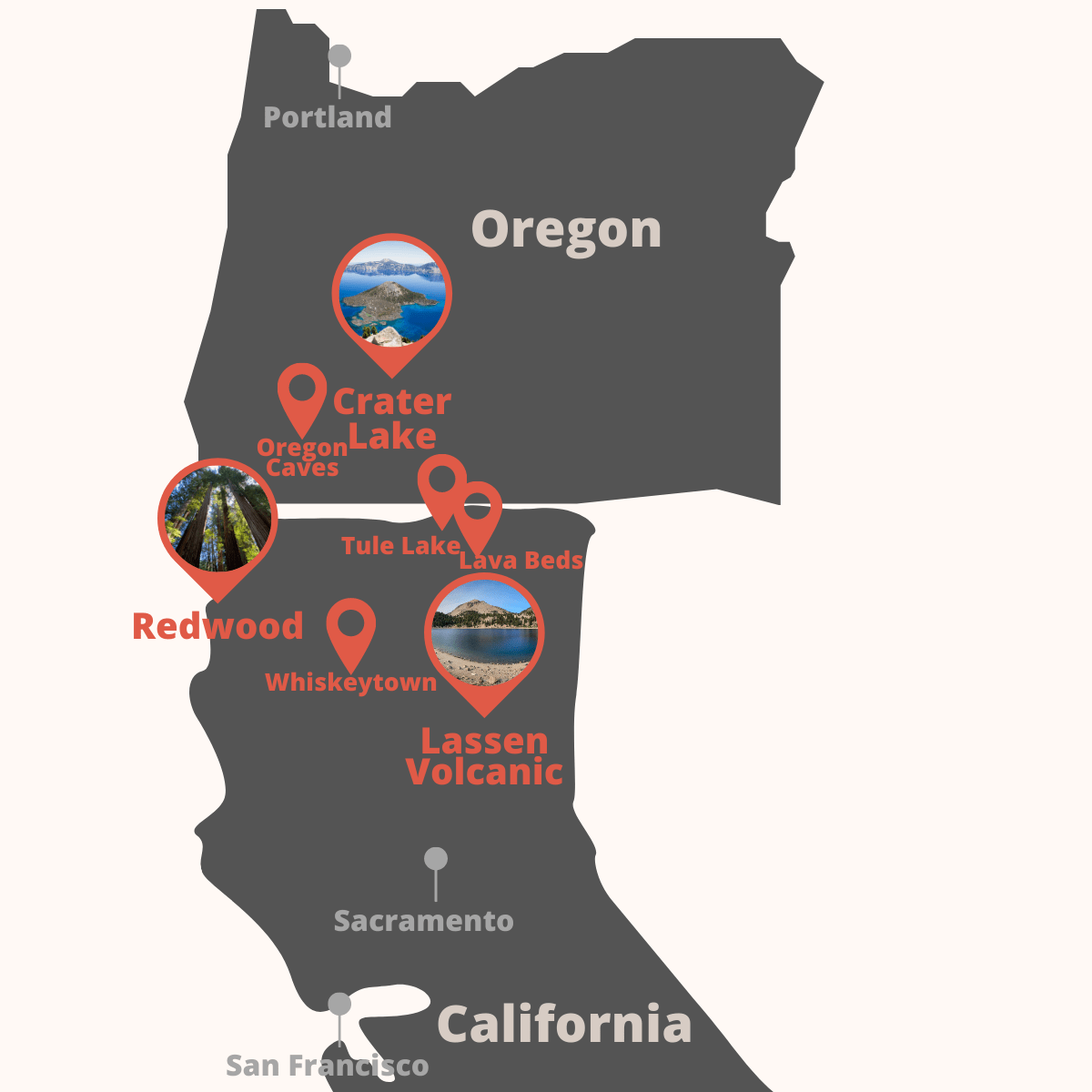
- Crater Lake National Park, OR
- Oregon Caves National Monument, OR
- Redwood National Park, CA
- Whiskeytown National Recreation Area, CA
- Lassen Volcanic National Park, CA
- Lava Beds National Monument, CA
- Tule Lake National Monument, CA
Highlights: Volcanic landscapes, craters, fumaroles, pumice plains, towering redwood forests, Pacific coast, caves and lakes
Wildlife to Watch For: Roosevelt elk, American pikas, bald eagles, black bears, bats, red foxes
Approximate Distance: 750 miles
Nearest Major Cities: San Francisco, Sacramento and Portland
8. Northern Rocky Mountains
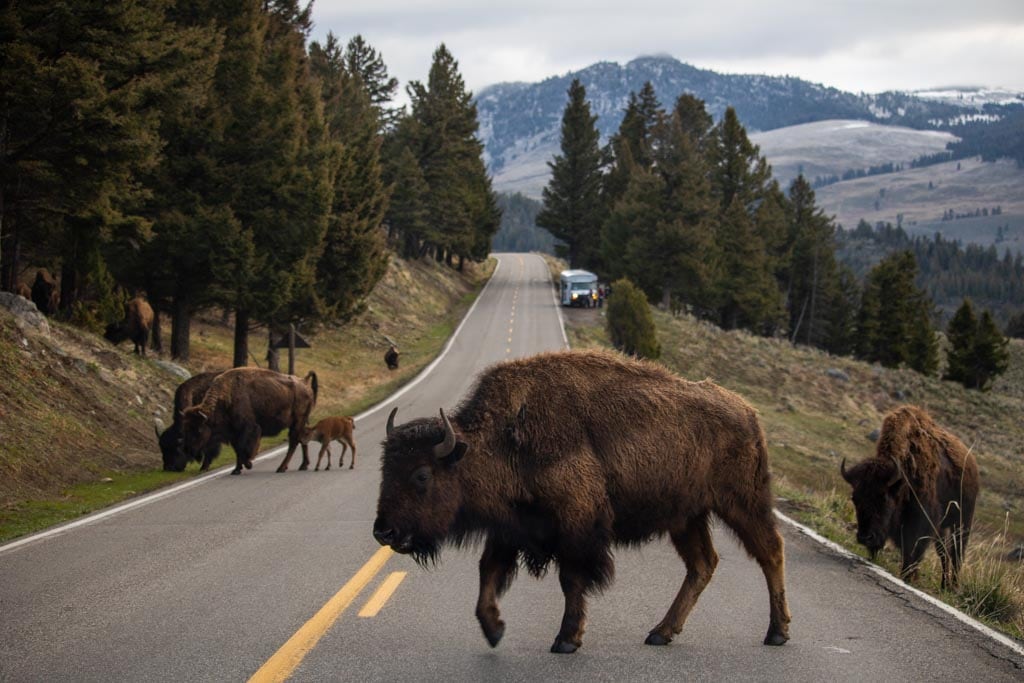
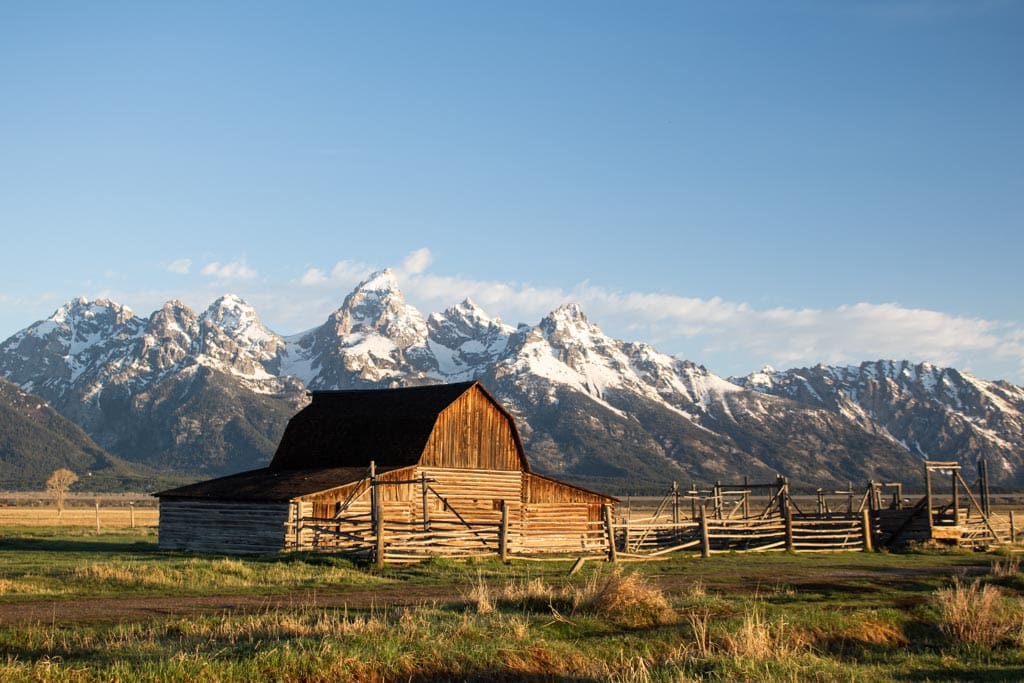
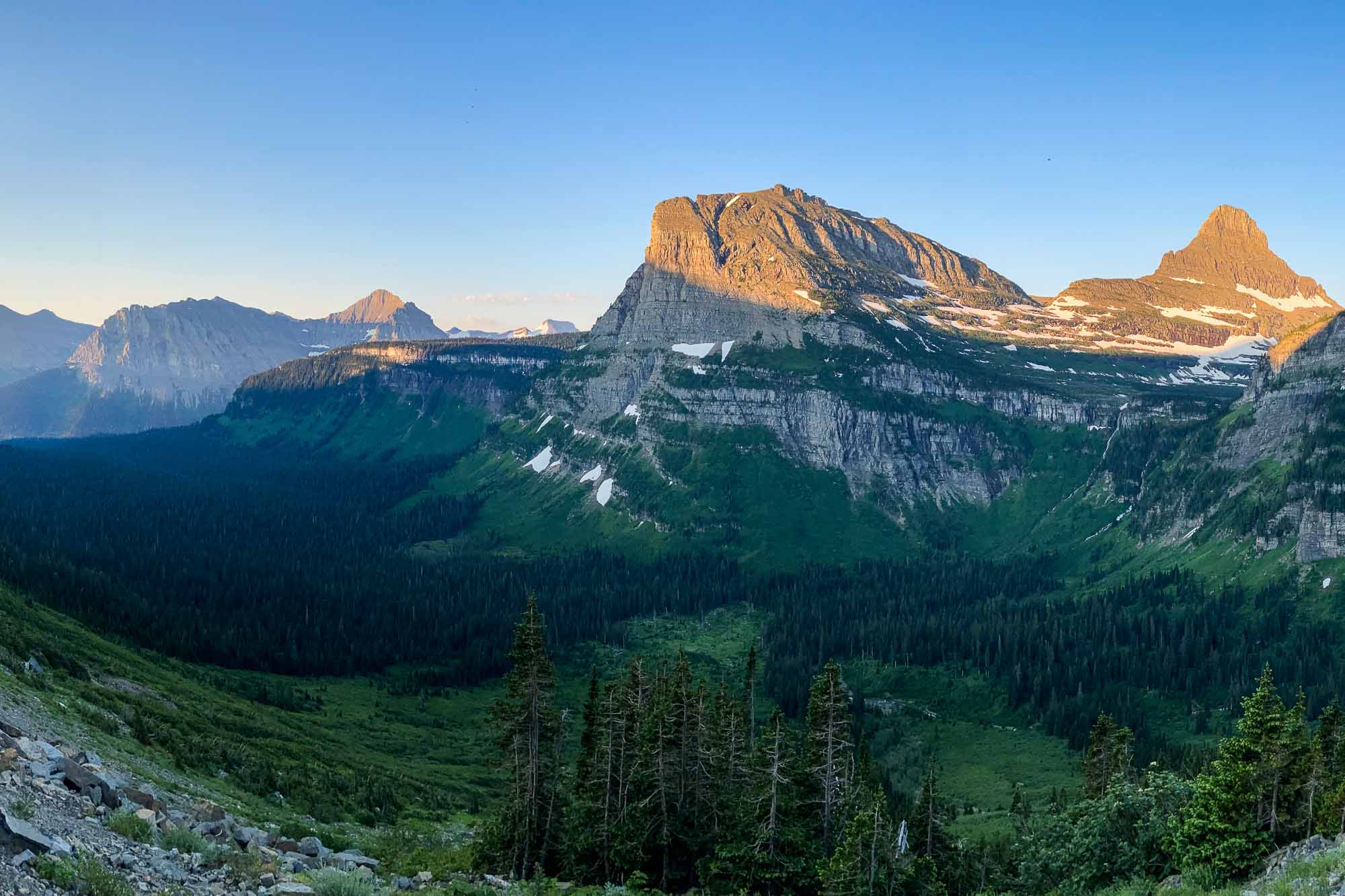
The ultimate trifecta of mountain parks, Grand Teton, Yellowstone and Glacier National Park make for one of the greatest road trips on the planet. It’s easily one of the best national park road trips in America. Driving from Wyoming to and across Montana, you’ll discover historic sites, encounter iconic wildlife and see unforgettable landscapes.
These three parks in the northern Rocky Mountains are among the most popular in the United States, attracting over eleven million visitors between them each year. That popularity is justified, though.
From the towering Teton Range to Yellowstone’s geysers and megafauna, and the breathtaking valleys of Glacier, this road trip allows you to immerse yourself in some of the world’s grandest natural scenery.
In fact, both the Grand Teton-Yellowstone area and Glacier National Park are UNESCO Biosphere Reserves and World Heritage Sites, attesting to the region’s immense natural beauty and resources of global importance.
Spend a couple of weeks exploring northern Wyoming and Montana, the very minimum amount of time you’ll need to see these three spectacular parks. See grizzly bears, wolves, bighorn sheep, moose and American bison in the wild, among lots of other animals.
Drive world-class roads, such as the Yellowstone Grand Loop Road and Going-to-the-Sun Road, kayak on alpine lakes, sample local huckleberry products, camp under the stars or stay at amazing historic lodges, visit Native American and pioneer sites,… The list of activities goes on and on.
Northern Rocky Mountains National Parks Road Trip Info
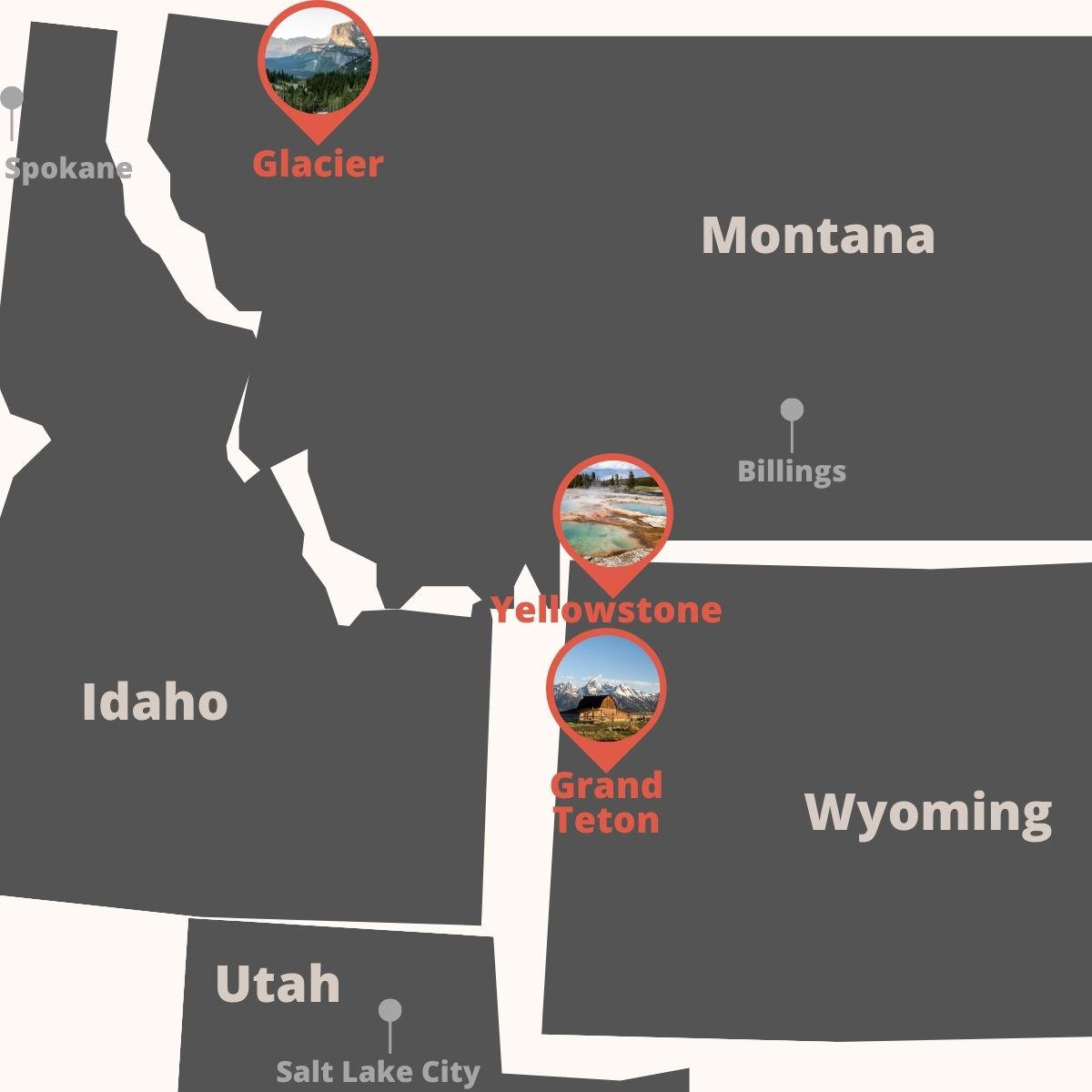
Highlights: Spectacular mountain ranges, glacier-carved valleys, alpine lakes, wild rivers and streams, geysers and hot springs, Native American and pioneer sites, lots and lots of wildlife
Wildlife to Watch For: Black and grizzly bears, moose, elk, American bison, pronghorn, mountain goats, bighorn sheep, gray wolves, American pikas, bald eagles, trumpeter swans, sandhill cranes, trout
Approximate Distance: 1,100 miles
Nearest Major Cities: Billings, Spokane and Salt Lake City
Nearby Towns: Jackson Hole, West Yellowstone, Cody, Kalispell, Columbia Falls and Whitefish
9. Dakota Black Hills & Badlands
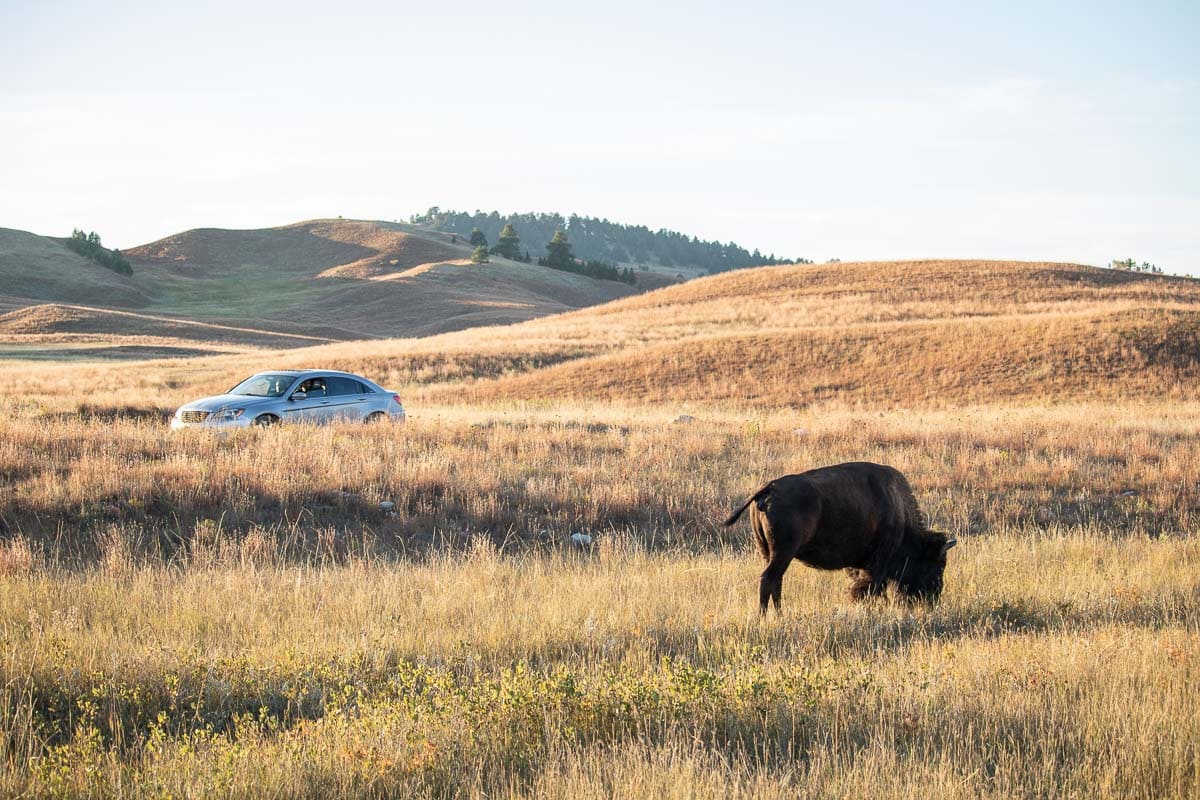
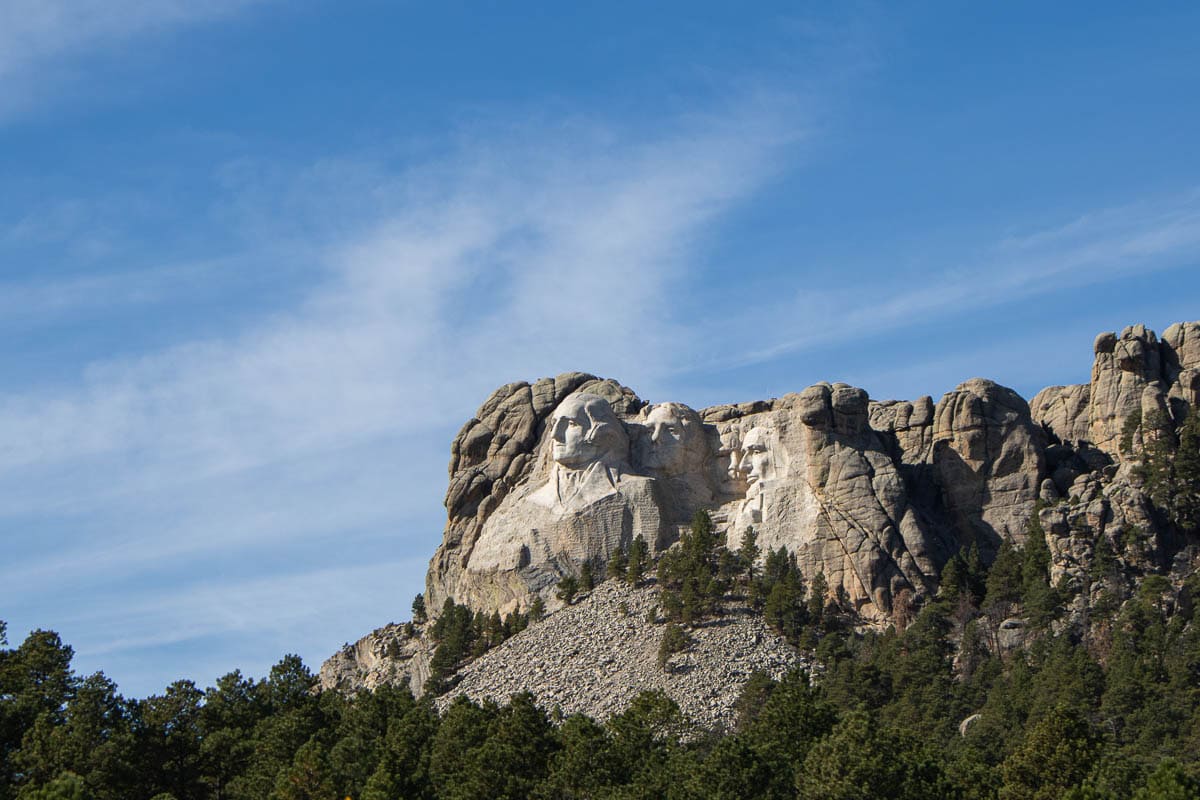
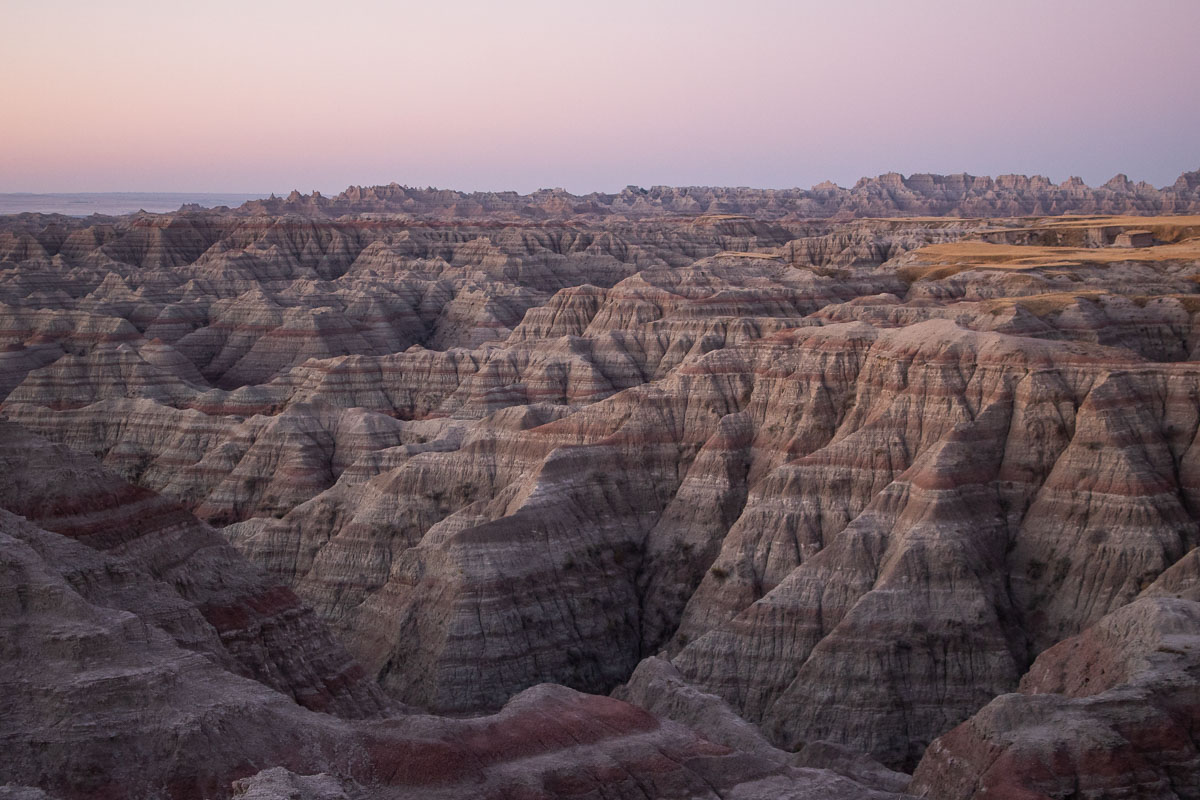
While the Dakotas are known best for their vast prairie landscapes and cowboy culture, both states also boast some spectacular natural scenery.
All of the greatest national parks in South Dakota and North Dakota are concentrated in the states’ western part.
In southwestern North Dakota, Theodore Roosevelt National Park—the only national park named after a U.S. President—encompasses lush badlands, sprawling grasslands and a number of historic sites.
A scenic road loops through the heart of its South Unit, passing by amazing viewpoints, beautiful scenery along the Little Missouri River and offering excellent wildlife viewing opportunities.
After exploring this underrated national park for a day or two, head south to the legendary South Dakota Black Hills.
This relatively small area, an island of hills and forests amid endless prairie, is home to several National Park Service units, a gorgeous state park and a large national forest.
In the Black Hills, a sacred area in Lakota culture, you can visit Wind Cave National Park, encompassing one of the world’s largest known caves, as well as grasslands, forests and slopes. Watch for wildlife like American bison, pronghorn, prairie dogs, coyotes, rattlesnakes and elk.
Also in the Black Hills, you’ll find Mount Rushmore National Memorial, one of the most famous landmarks in the entire United States. A number of scenic drives link all these parks together, also taking in Jewel Cave National Monument and Custer State Park, which is renowned for its wildlife.
A short drive to the east from the Black Hills lie the jaw-dropping South Dakota Badlands, protected as Badlands National Park.
This is a truly sensational place to drive through, the Badlands Loop Road lined with numerous overlooks, wonderful Badlands hiking trails, boardwalks and a few historic sites.
Although you can get a sense of Badlands National Park in just one day, I strongly recommend spending at least one night and one more day there. Both the sunrises and sunsets in the Badlands are unforgettable, while the star-studded night sky is among the grandest in the nation.
A nice side trip when driving the Badlands Loop Road is the Minuteman Missile National Historic Site, which preserves an arsenal of nuclear missiles dating from the Cold War.
Alternative Itineraries
If you have more time at your disposal, you can also add iconic Devils Tower National Monument to your itinerary. The first-ever designated national monument, Devils Tower is just northwest of the Black Hills in Wyoming.
Alternatively, you can leave out Theodore Roosevelt National Park and just focus on the South Dakota Black Hills and Badlands region. There’s plenty to see and do there to keep you busy for at least a whole week or more.
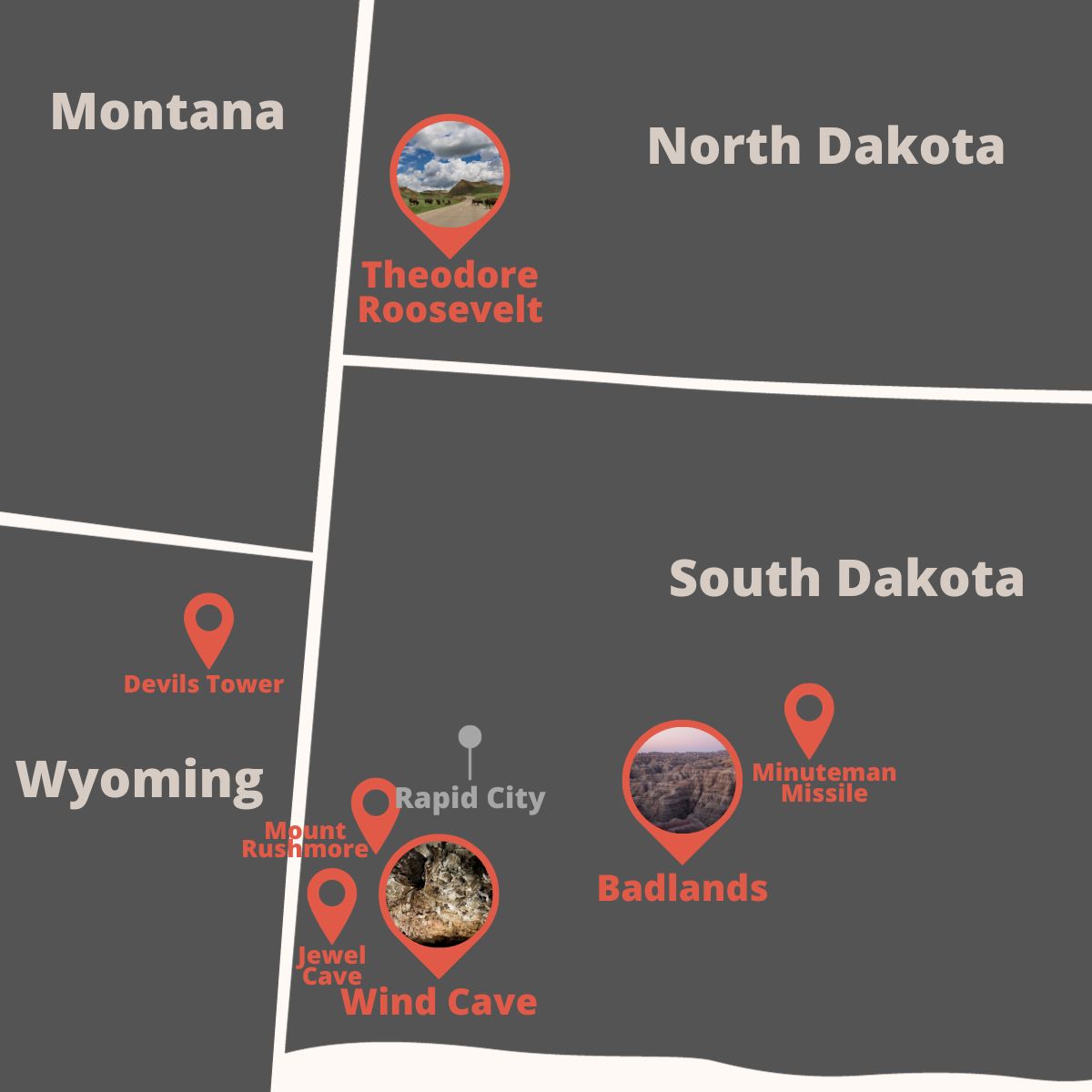
Dakota Black Hills & Badlands National Parks Road Trip Info
- Theodore Roosevelt National Park, ND
- Wind Cave National Park, SD
- Jewel Cave National Monument, SD
- Custer State Park, SD
- Mount Rushmore National Memorial, SD
- Minuteman Missile National Historic Site, SD
- Badlands National Park, SD
- Devils Tower National Monument, WY
Highlights: Two of the world’s longest caves, spectacular cave formations, scenic drives, sprawling prairie landscapes, historic sites and landmarks, colorful badlands
Wildlife to Watch For: American bison, prairie dogs, rattlesnakes, burrowing owls, pronghorn, coyotes, elk, mule deer
Approximate Distance: 900 miles
Nearest Major Cities: Rapid City, South Dakota
10. Florida Keys, Everglades & Coral Reefs
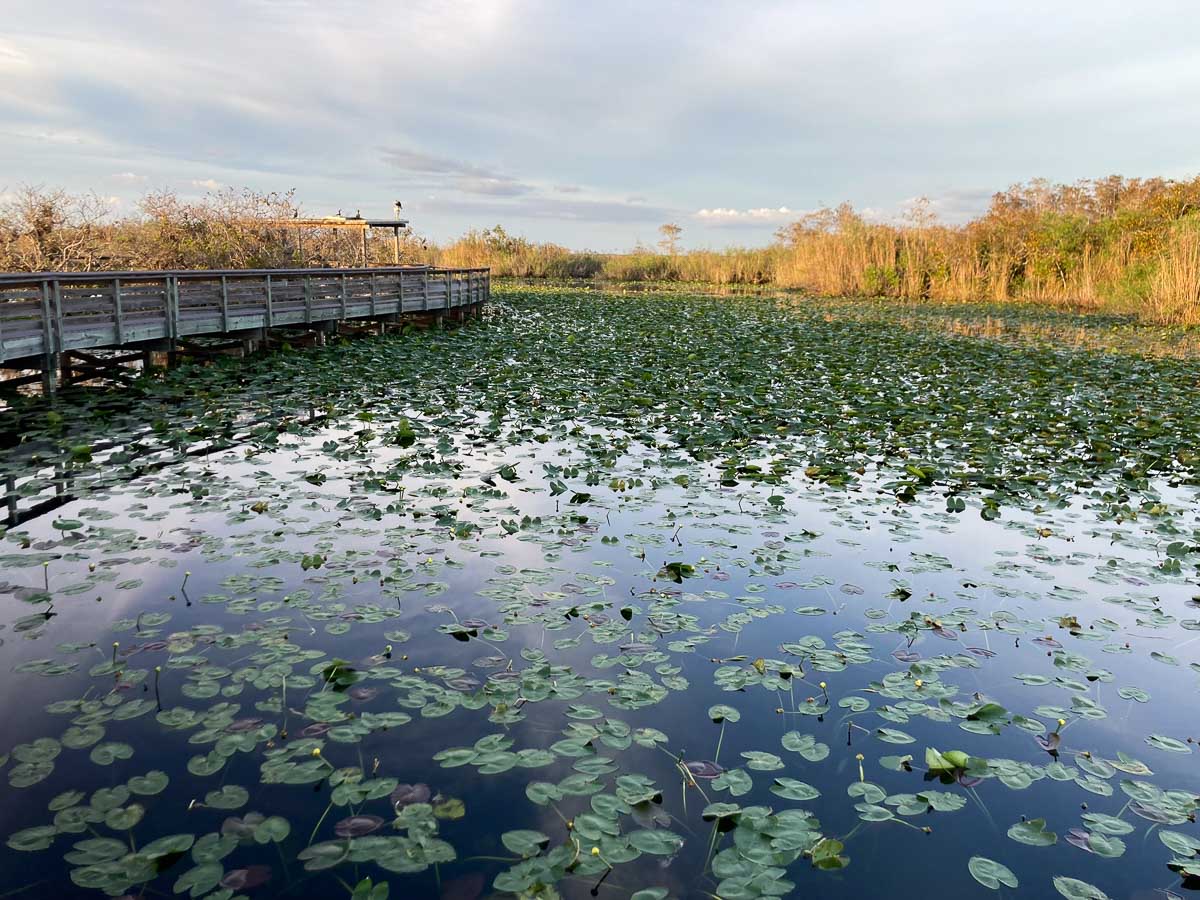
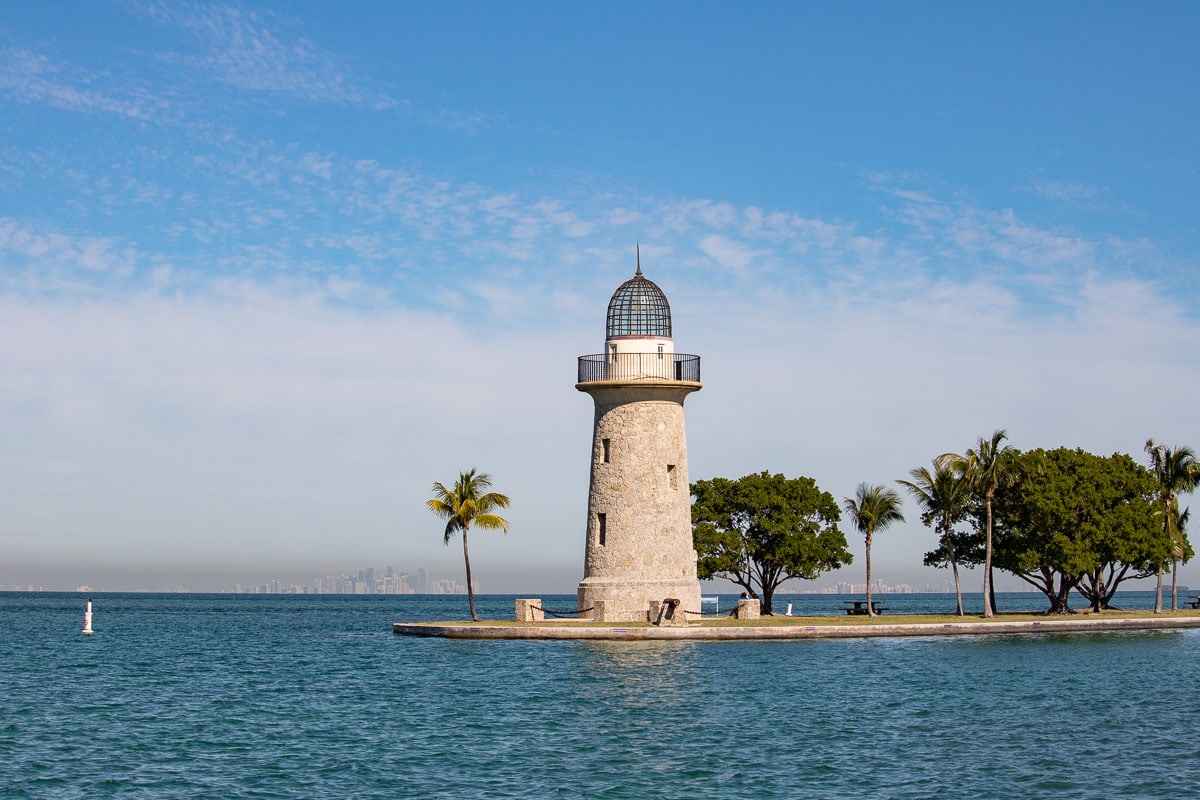
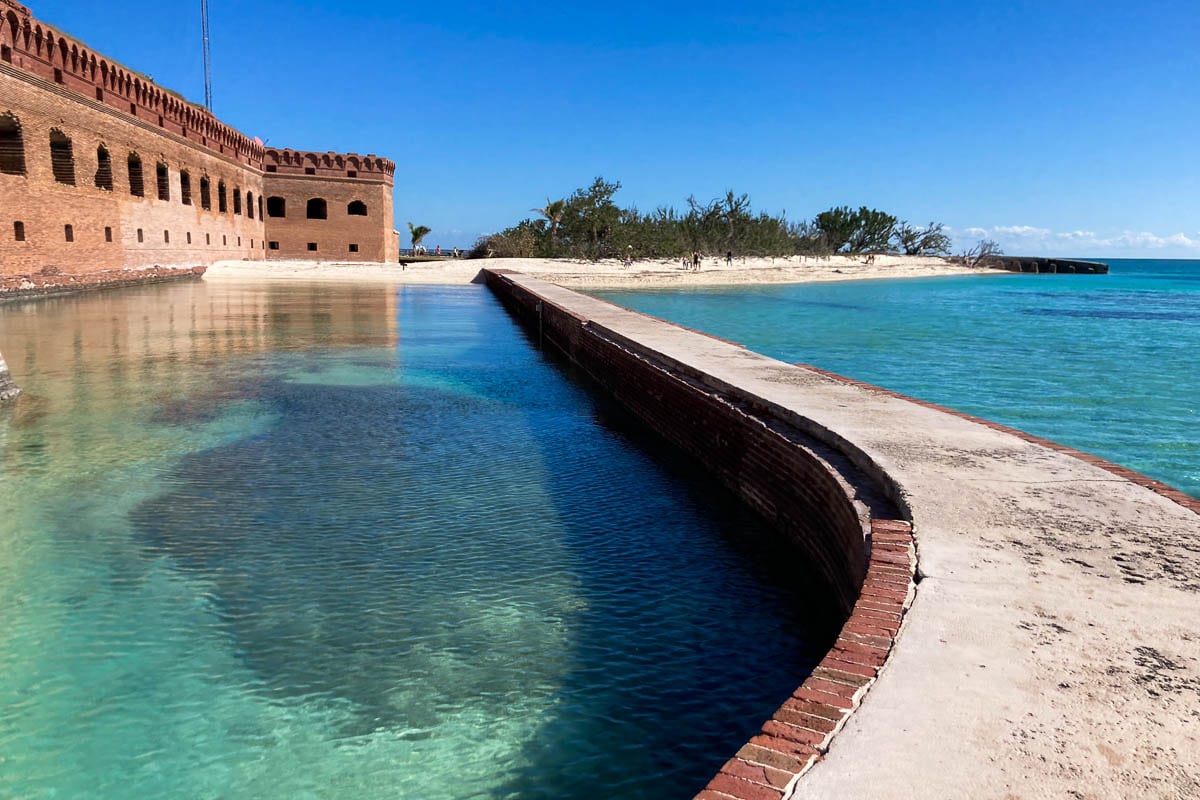
Clustered in and around the southern tip of Florida are three amazing national parks and one national preserve. Together, these four National Park Service units preserve various vulnerable ecosystems, protecting them against the raging urban development of greater Miami.
Miami, or nearby Fort Lauderdale, both of which are home to an international airport, are the typical starting point for a road trip to the national parks of Florida.
The first park many people visit is Everglades National Park, situated just west of Miami.
The third-largest national park in the contiguous United States after Death Valley and Yellowstone, Everglades encompasses sprawling sawgrass marshes, hardwood hammocks, mangrove-lined coastline, and the shallow waters of Florida Bay.
This is one of the best places in America for wildlife watching. In fact, the Everglades are the only place in the world where alligators and crocodiles live side by side.
Additionally, you can also see a positively mindboggling number of bird species in the Everglades. From roseate spoonbills, great egrets, green herons, and wood storks to owls, red-shouldered hawks, osprey, pelicans, and vultures, Everglades National Park is one of the world’s premier birding destinations.
Just north of Everglades National Park lies Big Cypress National Preserve. This park protects a large area of mainly cypress swamps. Here, too, you can see alligators and an incredible variety of birds.
I recommend dedicating at least three days to Everglades National Park, which allows you to explore all main areas in the park, including Royal Palm, Flamingo, and Shark Valley.
Spend one day in Big Cypress National Preserve, situated just west of Shark Valley, before moving on to the next South Florida park—Biscayne National Park.
Biscayne is just east of the Everglades and south of Miami. One of the largest marine parks in the United States, Biscayne National Park is 95% water. It protects most of shallow Biscayne Bay, as well as a stretch of mangrove-fringed shoreline and a number of Florida Keys.
In just one day, you can see most of Biscayne’s top attractions. Explore the visitor center and art gallery at Convoy Point before going for a boat tour in Biscayne Bay.
On guided boat tours, you get to visit Boca Chita Key and its iconic lighthouse, cruise through Stiltsville, and spend some time snorkeling or scuba diving in the Florida Reef, one of the largest coral reefs on the planet.
After Biscayne National Park, it’s time for a scenic drive through the famed Florida Keys, from Key Largo all the way to Key West. Although there are no National Park Service sites here, you need to get to Key West to visit Dry Tortugas National Park.
The Dry Tortugas are a small and remote group of islands almost 70 miles west of Key West. They’re the actual end of the Florida Keys island chain.
Dry Tortugas National Park can be visited on day trips with a high-speed catamaran from Key West (or by seaplane).
On a day trip, you can explore massive Fort Jefferson, see rare sea birds, sunbathe on one of the best beaches in the Florida Keys, and explore the park’s spectacular underwater world.
Florida National Parks Road Trip Info

- Everglades National Park
- Big Cypress National Preserve
- Biscayne National Park
- Dry Tortugas National Park
Highlights: Sprawling sawgrass marshes and cypress swamps, mangrove-lined coastline, Biscayne Bay and the Florida Keys, Fort Jefferson, an incredible abundance of wildlife, including alligators, crocodiles, manatees and birds
Wildlife to Watch For: American alligators and crocodiles, manatees, dolphins, sea turtles, rays, and countless birds species, including egrets, herons, roseate spoonbills, ibis, hawks, osprey, eagles, pelicans and vultures
Approximate Distance: 625 miles
Nearest Major Cities: Miami and Fort Lauderdale
More Epic National Park Road Trips
Below, you’ll find several more amazing road trips to national parks in America. I didn’t include them in the list above because I haven’t visited all the parks on these itineraries yet.
As I continue to make my way around the U.S. national park system, I’ll add them to the list (with photos and links!) in the future.
- Off-the-Beaten Path Southwest
- White Sands National Park
- Carlsbad Caverns National Park
- Guadalupe Mountains National Park
- Big Bend National Park
- Sierra Nevada Mountains
- Lassen Volcanic National Park
- Yosemite National Park
- Sequoia National Park
- Kings Canyon National Park
- Alaska’s Wilderness & Wildlife
- Denali National Park
- Wrangell-St. Elias National Park
- Kenai Fjords National Park
- Colorado Rockies
- Rocky Mountain National Park
- Black Canyon of the Gunnison National Park
- Great Sand Dunes National Park

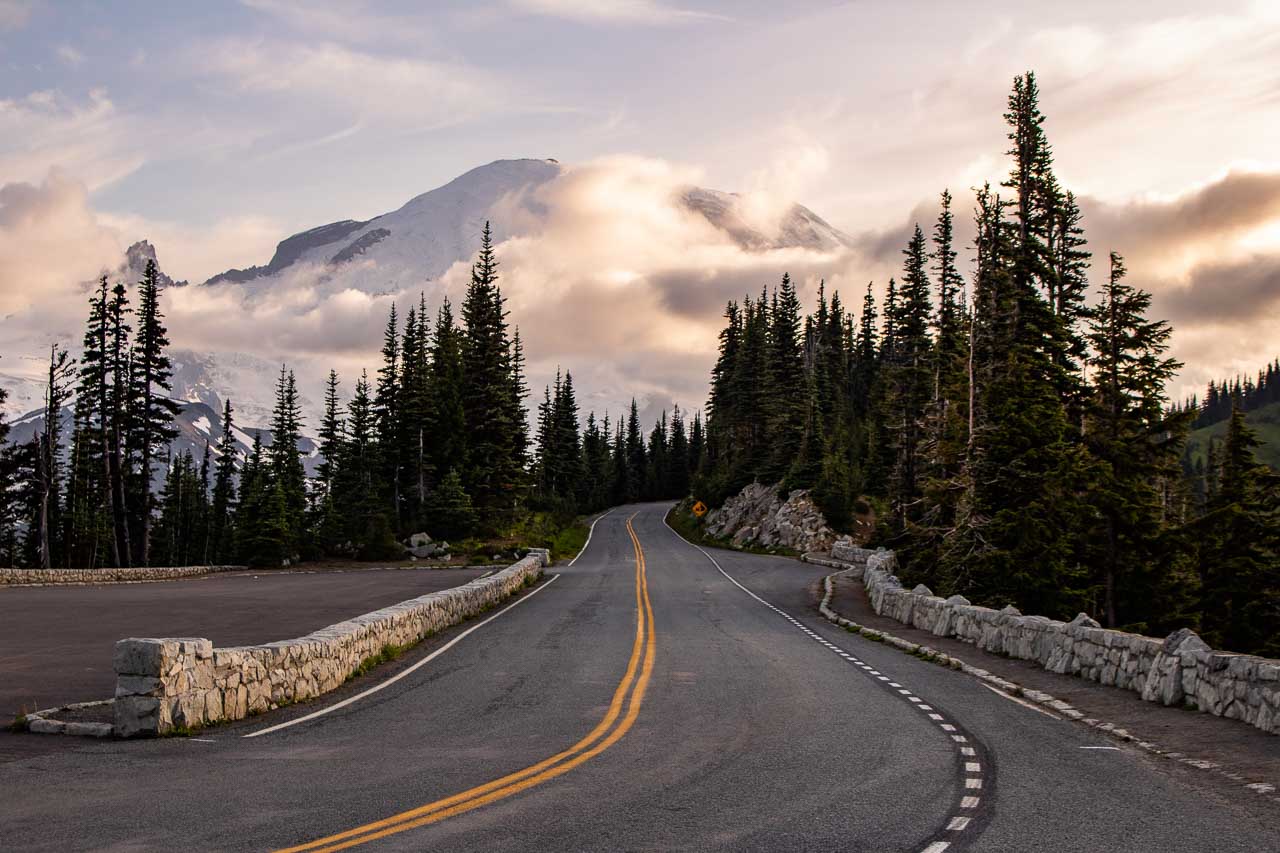





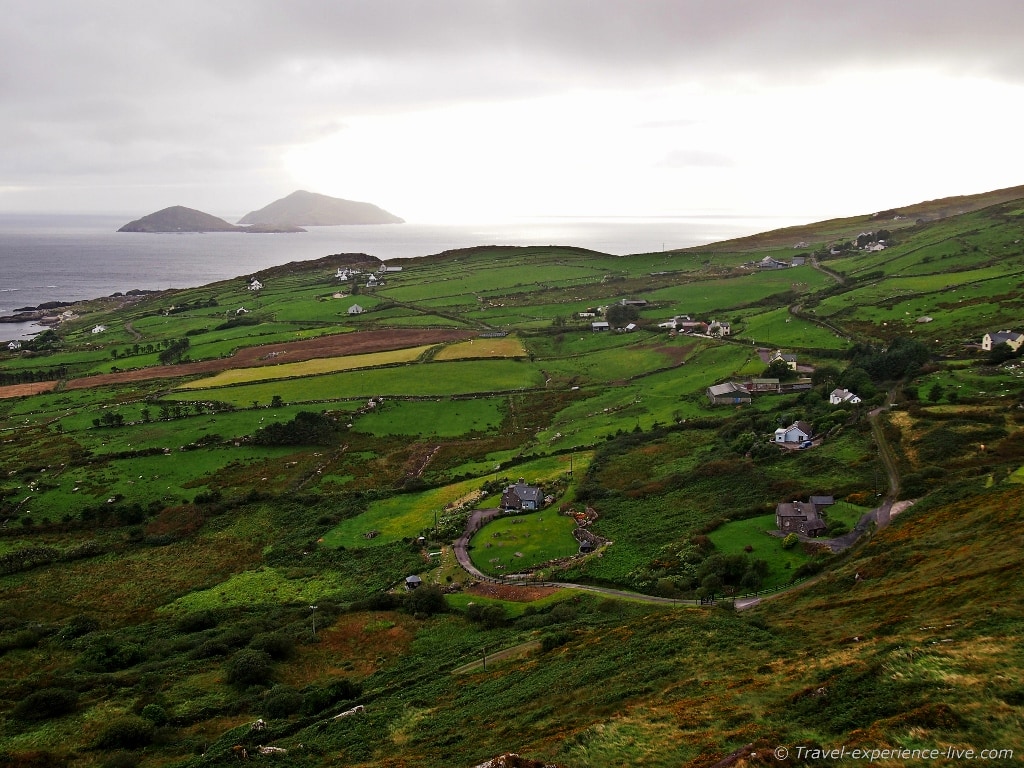
The summer after our son graduated from high school we went on a road trip to Petrified Forest, Glen Canyon Grand Canyon North Rim, Zion, Bryce Canyon, Capitol Reef, Canyonlands, and Arches National Parks.
It’s just awesome that we found this great article! I have signed up and await the resources to plan our next trips. We are Canadian snow birds from Winnipeg and make an annual trip to Yuma for the month of November for extra golf, since 2017. My wife is from ND and has a sister in Colorado Springs. We always take a week or so to get down south and if the weather is ok in early December take it slower getting back to the cold for family Christmas. We always get an $80 senior annual pass, what a deal! On the way down we have seen the Sand Dunes and Mesa Verde in Colorado; Petrified Forest; and this year the Carlsbad Caverns. On the way back we have been to Yosemite, Kings Canyon and Sequoia; and the Grand Canyon. While in Arizona we have visited Joshua and Organ Pipe. Looking forward to a trip to Wind Caves and the parks in Utah. It’s a great way to break up a three day trip south!
Cheers Pete
One roadtrip I’m planning on taking next year isn’t listed here. I call it the Southwestern Desert Roadtrip. Start at Phoenix head south and see all the places listed on the southern portion of the Arizona trip, head for New Mexico/Texas and hit: White Sands NP, Guadalupe Mtns NP, Carlsbad Caverns NP, and finally Big Bend NP. It helps that I have family in Odessa TX between CCNP and BBNP.
Sounds like an amazing road trip!